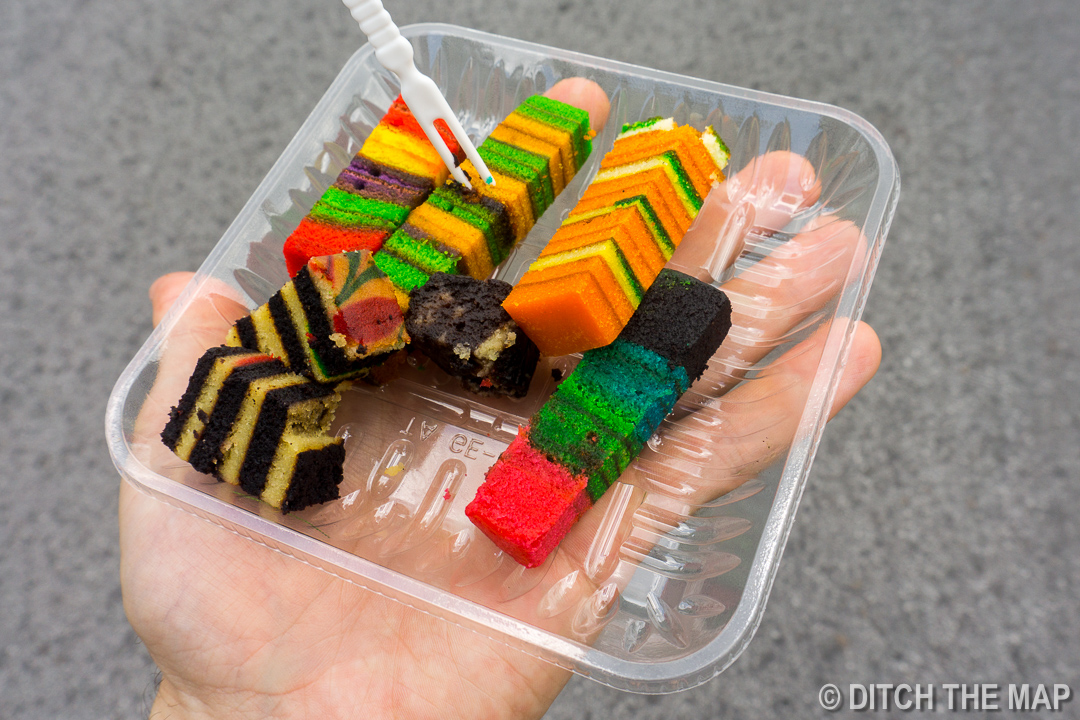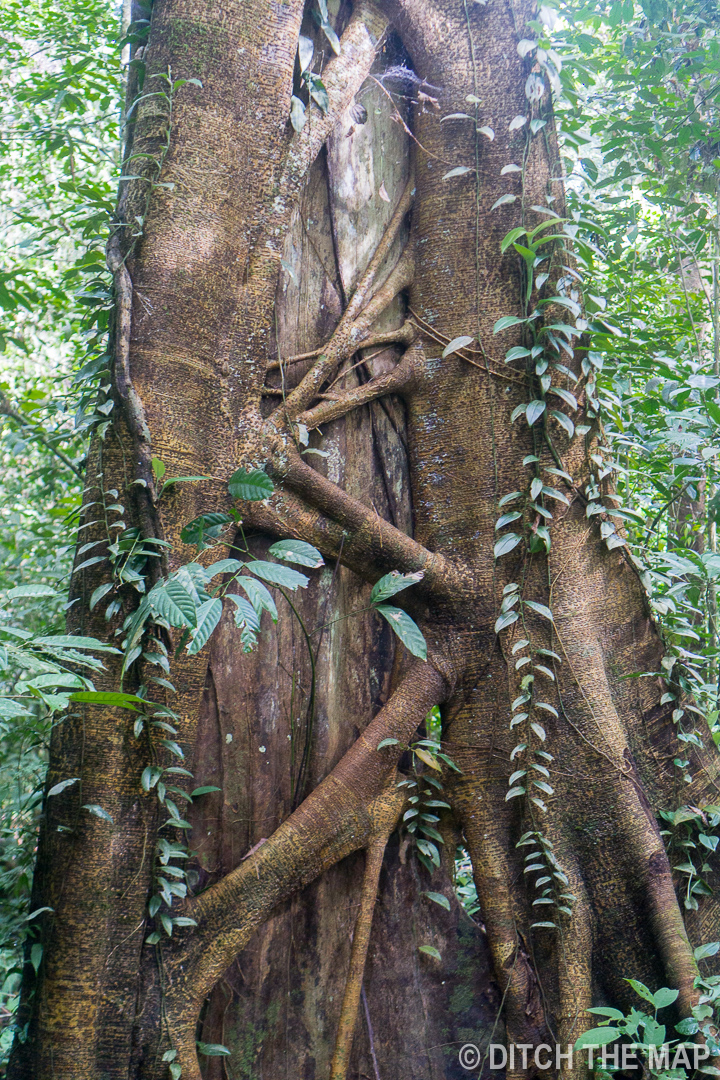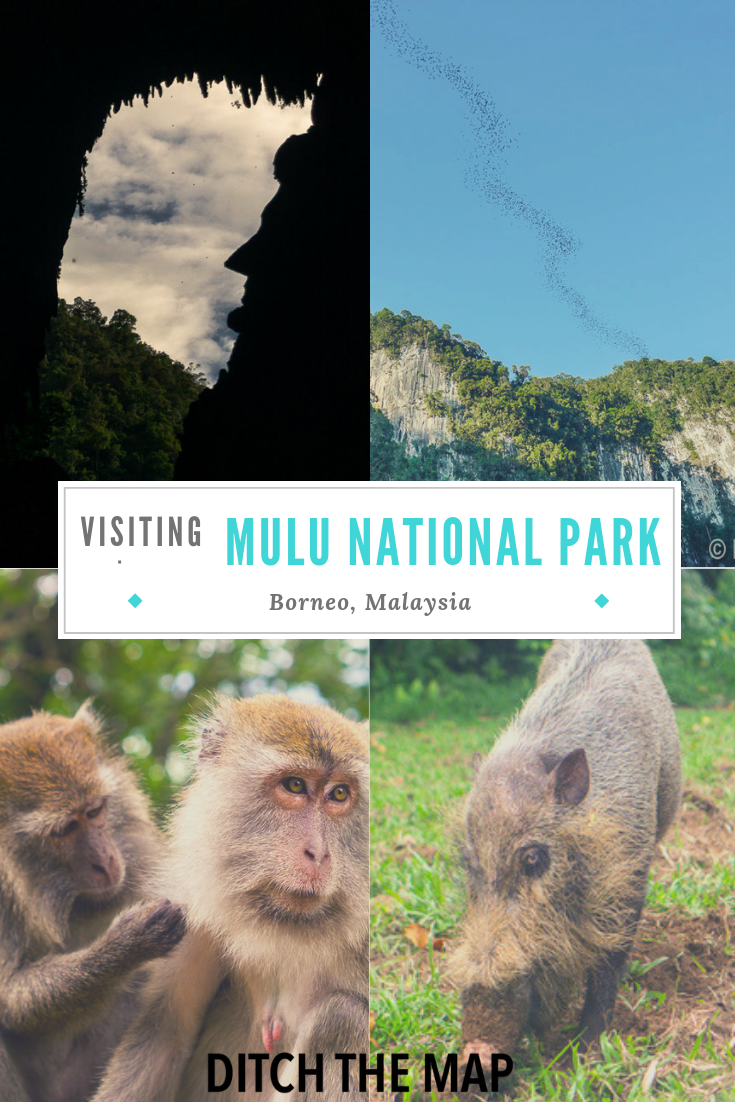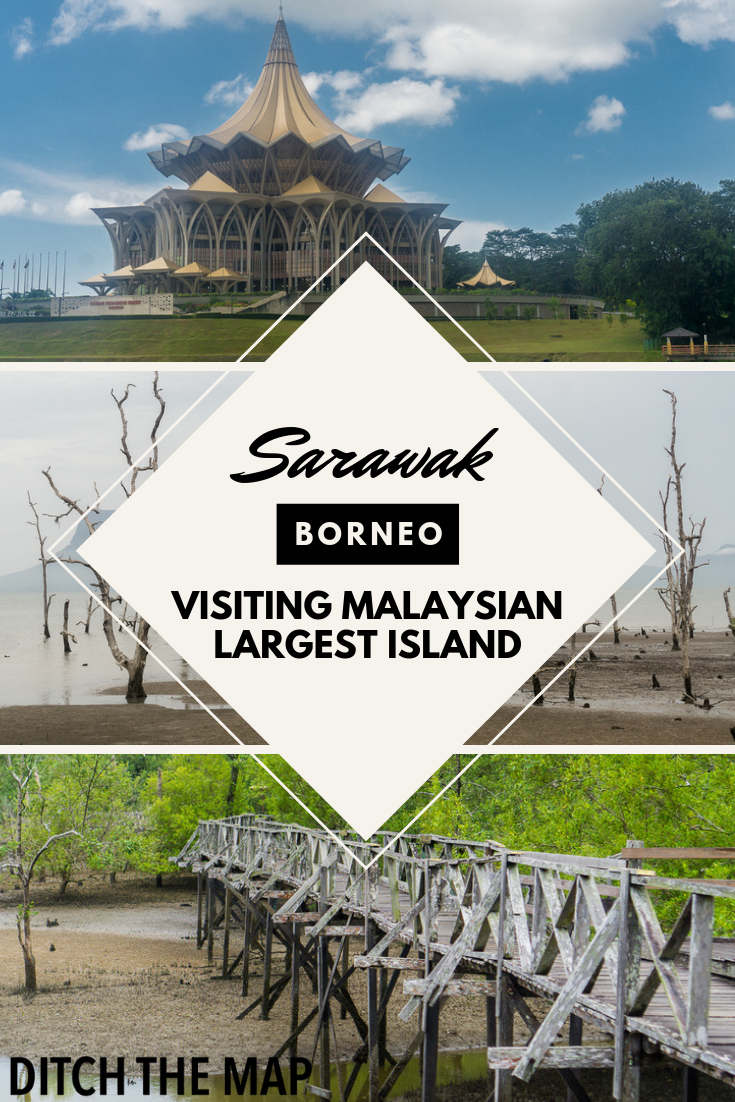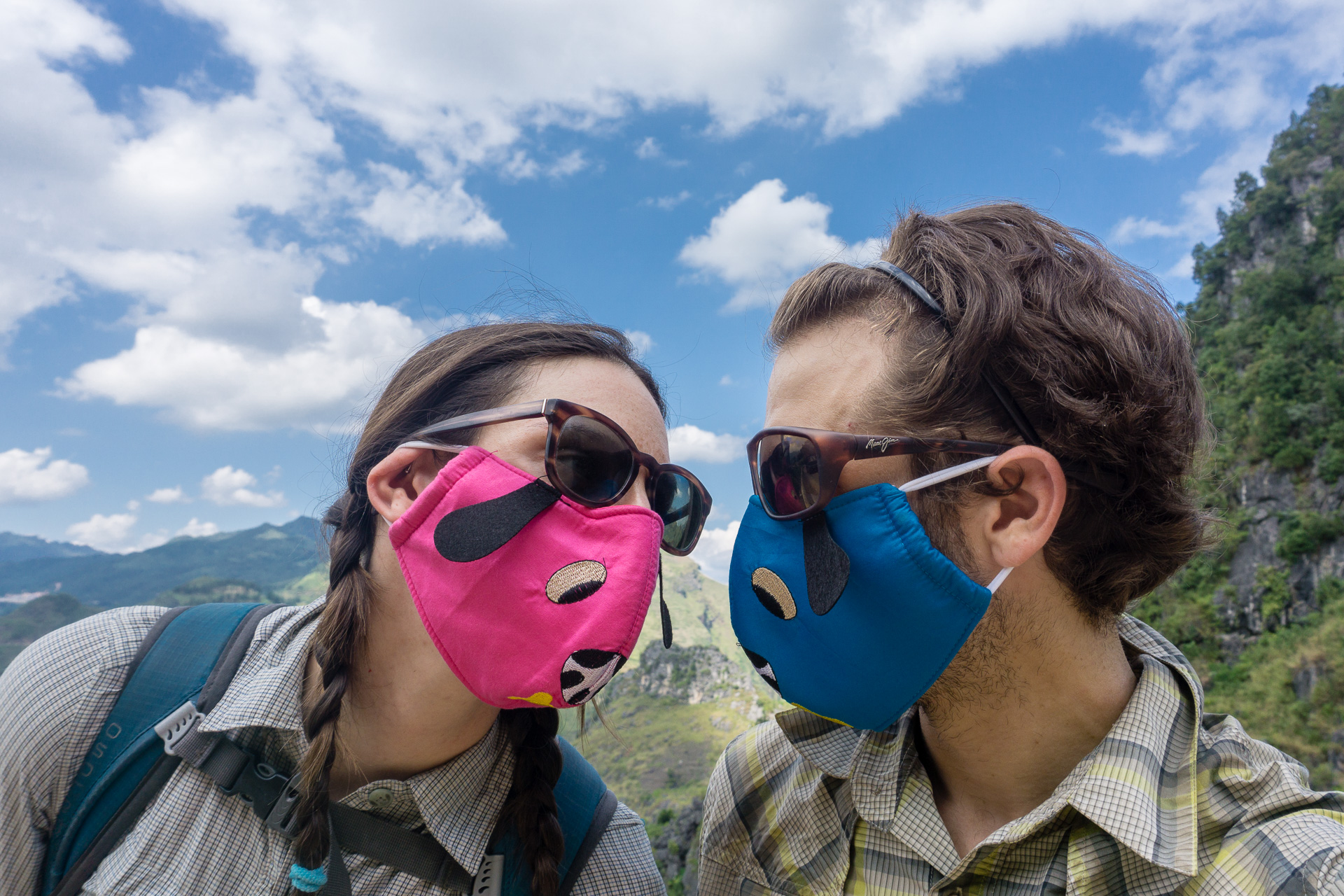8 Days in Sarawak, Borneo, Malaysia
/Kuching
Arriving in the City
We were surprised to encounter immigration upon arrival in Sarawak, despite still being Malaysian territory. Malaysian Borneo is divided into two states, Sarawak on the left and Sabah on the right with the small country of Brunei in between.
Map of the two states in Borneo
Our hostel in Kuching was superhero-themed and our room was decorated with all things Superman. A walk along the river and through Chinatown quickly gave us the impression of how quiet Kuching is. Chinese temples decorated with dragons spotted the area. Many shops in Chinatown remained closed for much of our time in Kuching and the majority of shops that were open sold gold jewelry.
Our Hero-Themed Hostel Room in Kuching, Sarawak, Borneo, Malaysia
Our Hero-Themed Hostel Room in Kuching, Sarawak, Borneo, Malaysia
If you are looking for something a bit nicer than a backpacker’s hostel check out all the Kuching Villas available for rent.
Despite the sleepy nature of the city there was no shortage of ongoing construction projects, mostly high-rise buildings. The occupancy rates of a few malls were dismal, but others were loaded with Starbucks, H&M, Burger King and the like. Despite reading that prices are higher in Borneo I have not found this to be the case everywhere. A can of beer along with two entrees at a local warung set us back only $3.
Along the waterfront of Kuching, Sarawak, Borneo, Malaysia
Topstop Food Stalls
Atop a nearby parking garage there was a popular food market comprising of a dozen or so food stalls, all selling fresh seafood. We walked around and decided to give our business to a quirky woman desperately trying to sell me on some extremely large king prawns. Her price for 2 was 40rm ($10 USD) cooked. I’m sure the price would be at least 3 times that in the states, they were huge! Instead I ordered half a stingray, grilled, and topped with belacan. The stingray was delicious with a perfect texture, somewhere in-between chicken and a mild fish. Stingrays, being closely related to sharks, are boneless fish. Not having to worry about biting into boney ribs made the meal much more satisfying. The belacan, however, was anything but satisfying. Although I found myself eating the strange paste-like sauce smothering my stingray I made a mental note to avoid it in the future. Belacan is a Southeast Asian food staple made from fermented shrimp paste. Its smell is more repulsive than its taste.
Grilled Stingray with Belacan Sambal in Kuching, Sarawak, Borneo, Malaysia
Vegetable Soup in Kuching, Sarawak, Borneo, Malaysia
Bako National Park
Our main purpose of visiting Sarawak was to explore Bako National Park National Park, a short drive and boat ride from Kuching. We hadn’t planned our lodging before booking our flights and were disappointed to learn that there were no more accommodations available within the park. Staying overnight in Bako NP is a great experience as it opens up the possibility of night hikes, a chance to see the animals when they are more active.
Taking the Jetty to Bako National Park in Sarawak, Borneo, Malaysia
Arriving at Bako National Park in Sarawak, Borneo, Malaysia
After the first day in Bako NP we had hiked 2 trails and felt that was sufficient. Of the 16 trails half were closed and we decided that we had seen enough and left with a feeling of disappointment. We saw the famous Proboscis Monkey, but not up close. Other than pitcher plants, bearded pigs, mudskippers, and macaques, the NP seemed rather barren to us--most life in the jungle stays hidden to us enveloped in the voluminous leaves and branches many meters above. The landscapes along the beach provided the best views of the day.
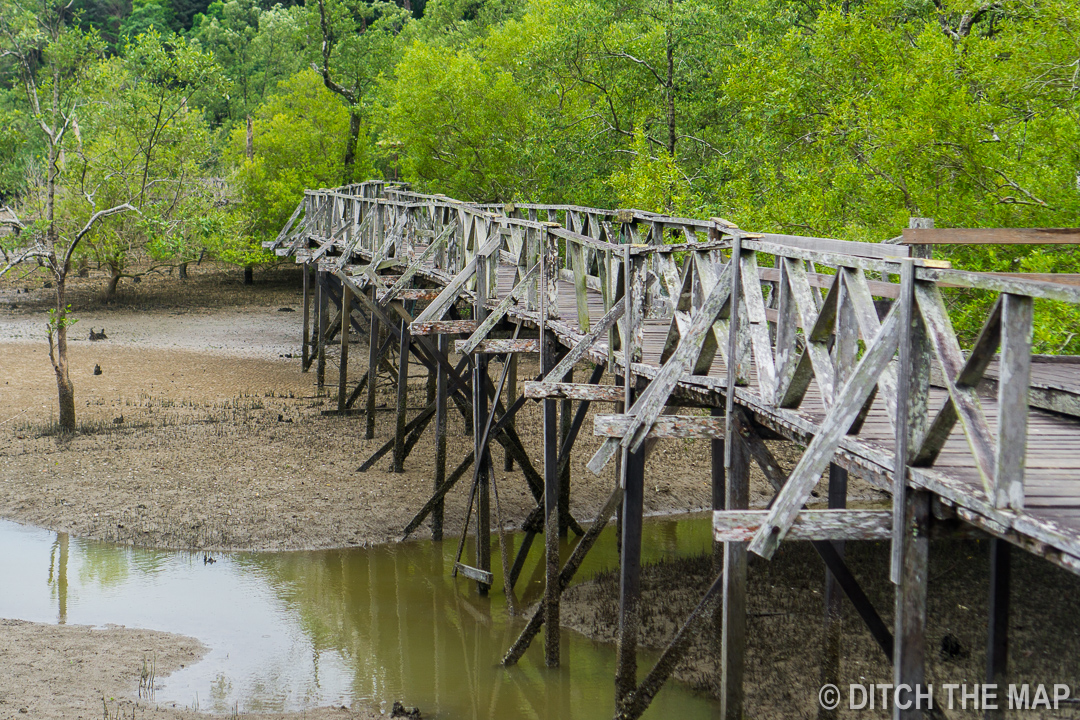
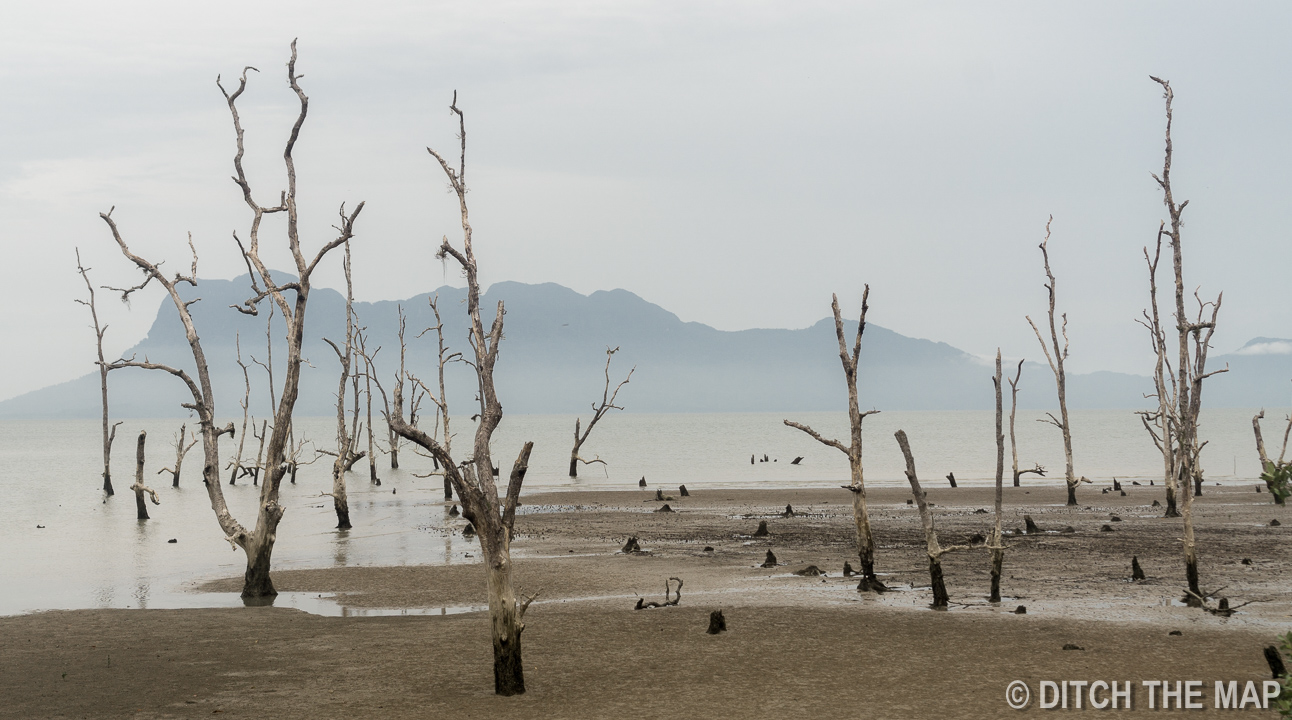
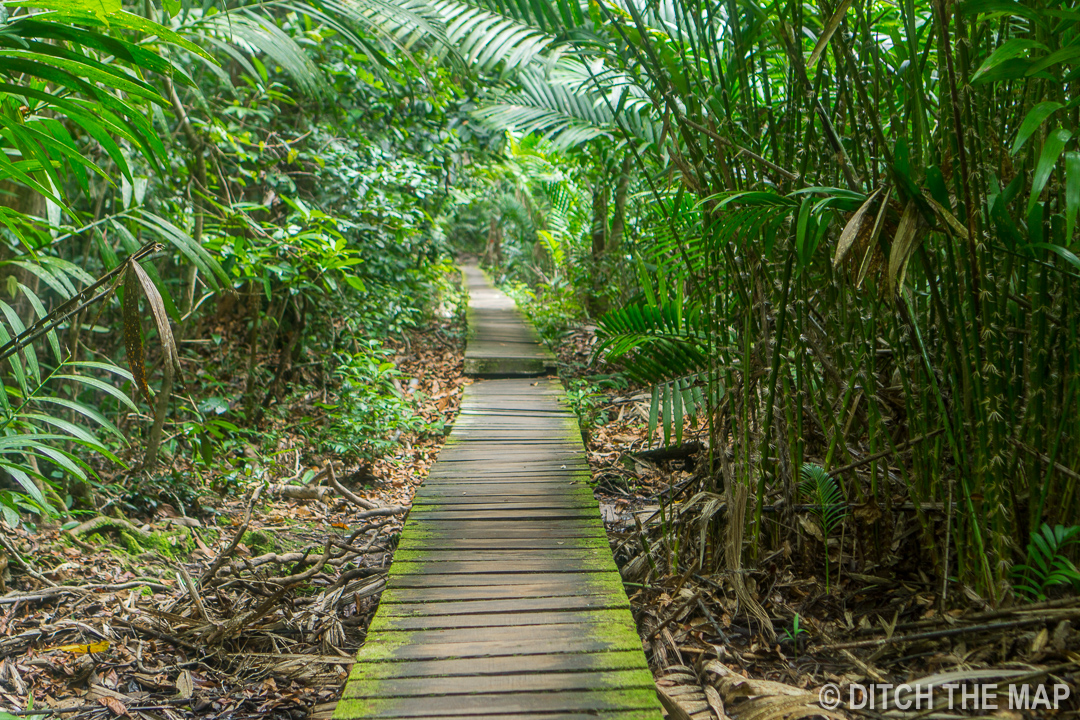
Arriving at Bako National Park by Boat (click to view)
Mudskippers at Bako National Park, Borneo, Malaysia (click to view)
Satok Weekend Market
We weren’t sure quite where the market was as it recently (in 2015) changed locations and now sits across the river, farther from the city. We finally found a cab driver that agreed to use their meter. It was nice to only pay 12rm instead of the 20rm the previous 3 drivers had quoted. Fresh vegetables, fruit, and fish were the highlights of the market even though many of the stall were closed for our Sunday visit. I was a bit disappointed to see that despite the plentiful oranges and apples there was no durian or jackfruit. I bought a couple unripe mangos and struggled to get them down the following day. A little spritz of lime juice made it more palatable. The attached hawker stalls offered some cheap local dining.
Mulsim Festival – Hari Raya Aidilfitri
Leaving the market, we tried to hitchhike back to the city center without much success. We stumbled onto a side street with tents and music. As we ventured closer we were greeted with dozens of smiles. A few hundred Muslims were celebrating their month-long festival, “Hari Raya Aidilfitri”, to celebrate the ending of Ramadan. There were clearly no other western tourists in the area. Nonetheless, everyone invited us to try the food being served and there had to be dozens of separate food stalls offering plentiful portions of satay, fruit, colorful layered cakes, cendol. We found ourselves a seat and chatted with a half-dozen women for an hour before making another round for free food. At one point a TV reporter filmed us. It was difficult to leave because so many people kept offering us free food and it was difficult to turn down their welcoming offers.
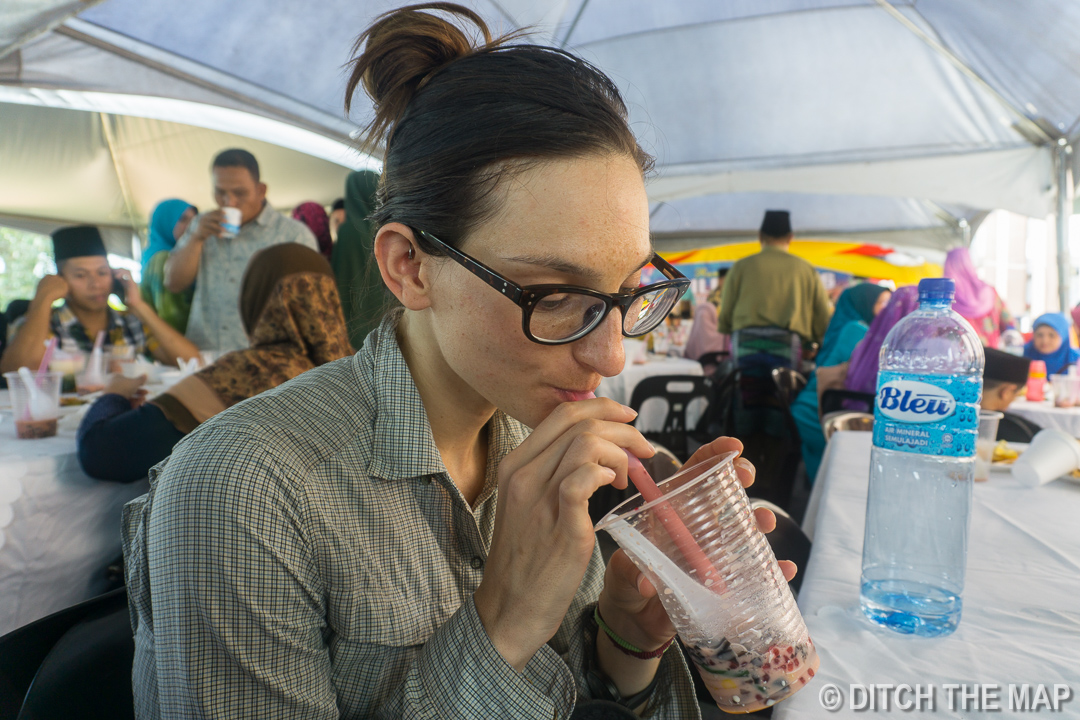
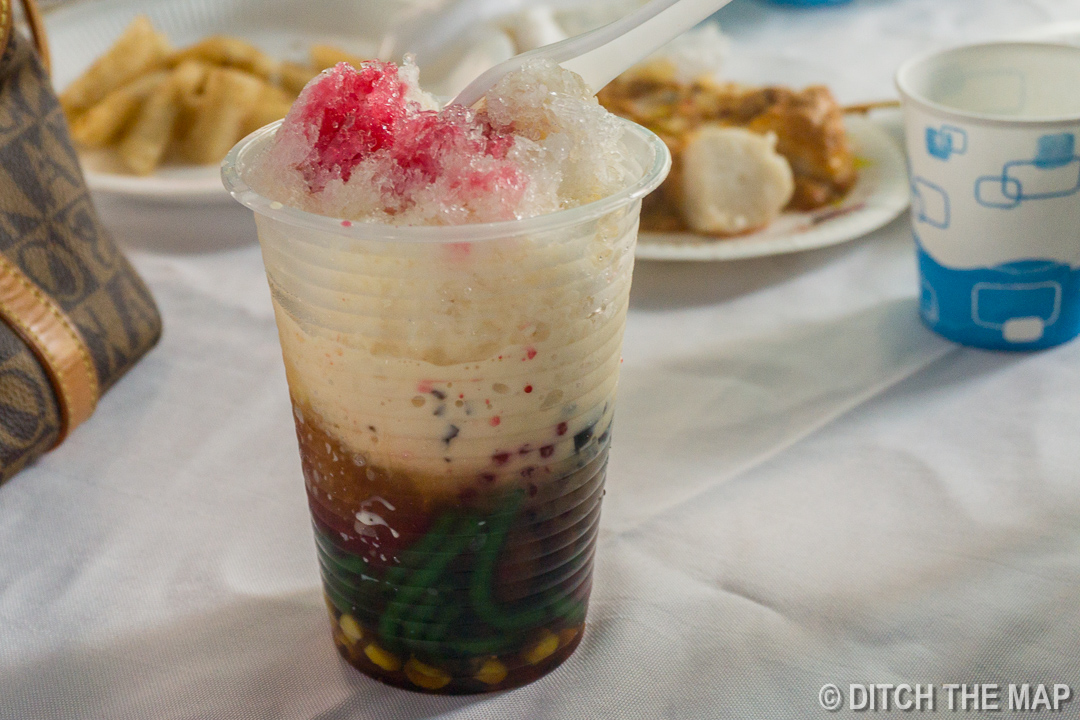
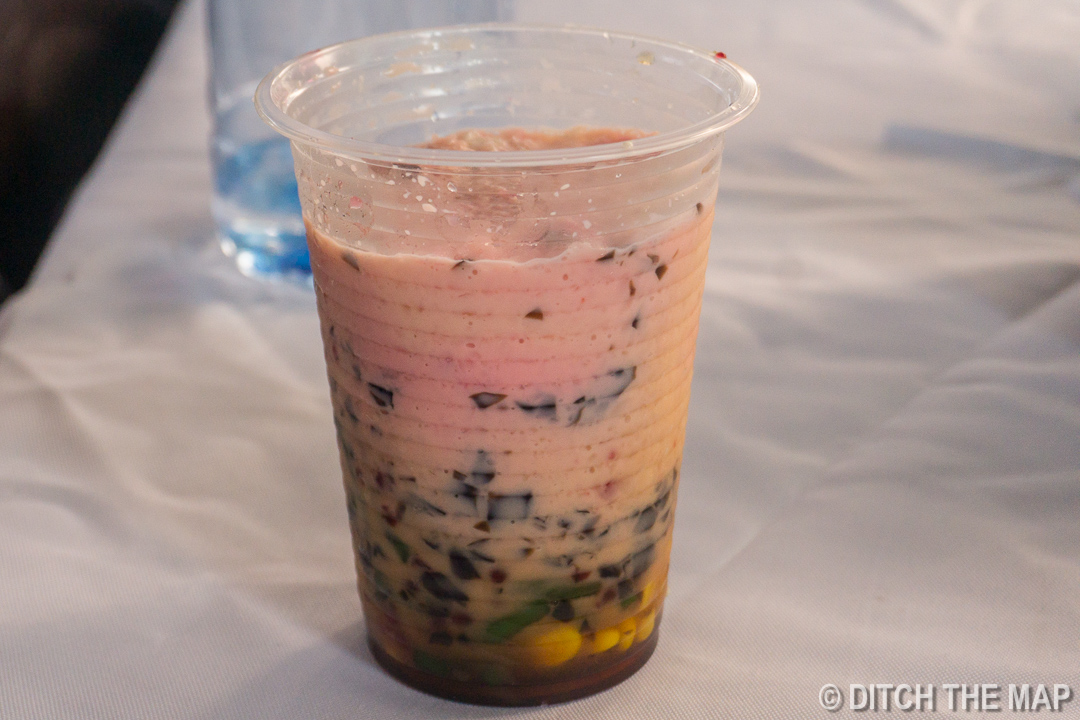
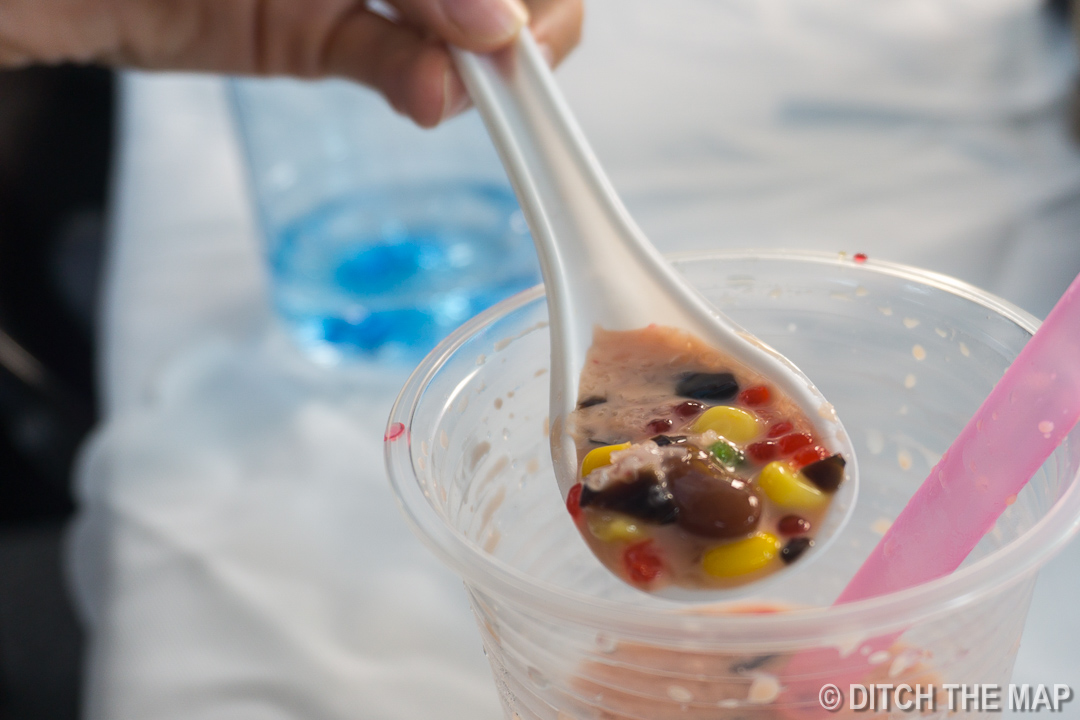
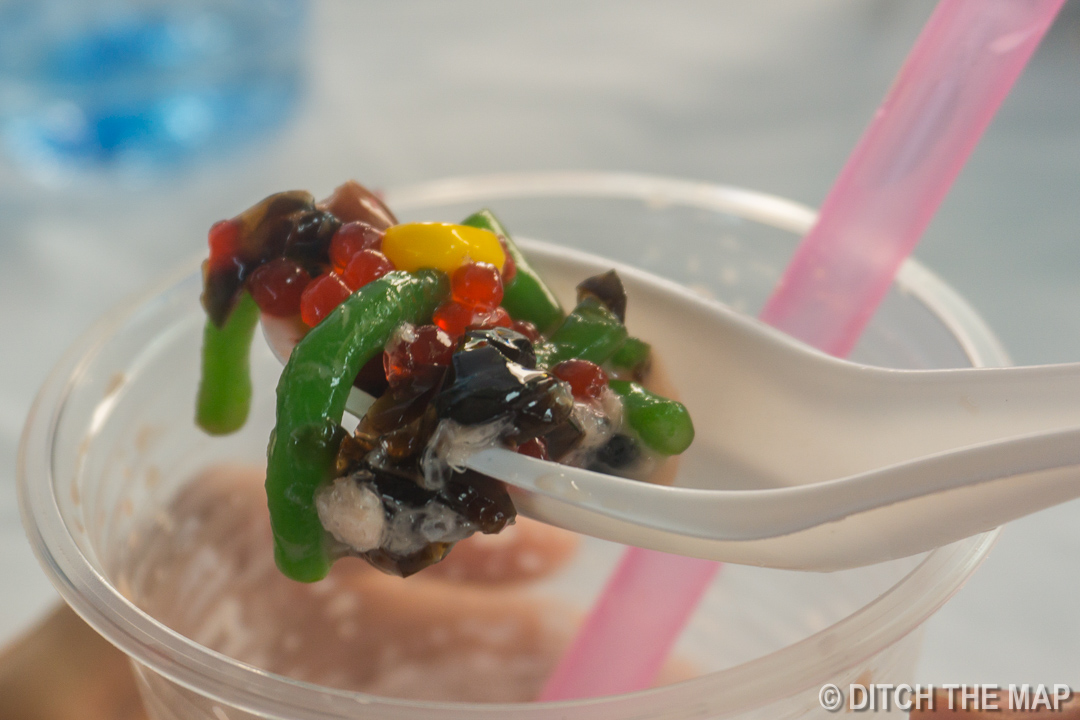
Muslim Holiday Festival in Kuching, Borneo, Malaysia (click to view)
Muslim Holiday Festival in Kuching, Borneo, Malaysia (click to view)
We left and starting walking down a main road when we saw one of the ladies we had just met driving in her Toyota minivan. She offered to drive us into the city and told us to get in. During our 15 minute drive she told us how she born in a house nearby (not a hospital). Within a few minutes she pointed out the window and said, “this is the house I was born in”. She then went on to say how her grandmother still lives there and that her mother lives in the house behind.
National History Museum
The National History Museum was a free way to kill some time. The first floor contained a large collection of taxidermy animals that represented the fauna of Sarawak while the upper floor contained cultural information about many of the tribes. Most of the information was about longhouses and the Iban tribes. Even though we were in and out in under 45 minutes it was still worthy of our time.
New Friend
While enjoying a tea and trip planning in a mall’s Starbucks we met a nice young man named Ikman. We invited him to sit next to us and he was quickly enticed by all of our travel stories. He had expressed his interest in traveling, but after we showed him our pictures from our Himalayan hike and of Patagonia he told us that he was for sure going to travel the world and that we had inspired him. We’ve inspired quite a bit of people, which makes us feel very good.
Our New Friend in Kuching, Sarawak, Borneo, Malaysia
Our New Friend in Kuching, Sarawak, Borneo, Malaysia
Mulu
Arriving in Mulu
From Kuching, a 1.5-hour plane ride brought us to Mulu National Park. The airport is built primarily to transport visitors to and from the park. Aside from a spattering of homestays and the National Park itself, there is nothing else around. Our hostel was a three minute walk from the airport which should give you an indication of how little there is around. Just a lovely little slice of wilderness without too much interference from civilization. Our homestay was tucked off of the 'main' street in front of a river. It was basic with outdoor showers and electricity provided via generator from 6pm-6am, but clean with a sweet host who cooked us breakfast and dinner each day.
Mulu Airport in Sarawak, Borneo, Malaysia
Mulu Airport in Sarawak, Borneo, Malaysia
We wasted no time upon our arrival and headed straight to the national park, a 15 minute walk away. At the park office we signed up for the only adventure cave tour still available, a canopy walk and a show cave tour. All of the guided night hikes were unfortunately booked up for several days in advance-the rain forest really comes alive at night. In retrospect, we probably should have thought to book more things in advance, but we knew only a week ago that we would be going to Borneo.
Our Homestay in Mulu National Park, Sarawak, Borneo, Malaysia
Our Homestay in Mulu National Park, Sarawak, Borneo, Malaysia
Mulu National Park
About The Adventure Caving we Did in Mulu National Park, Borneo
Mulu National Park is ranked as a World Heritage site because of it's vast bio diversity (which doesn't come as much of a surprise because of it's location in a rain forest) and it's high concentration of limestone caves. Some of the caves in the park are among the biggest and most impressive in the world. The park offers walking and adventure tours of the caves. The adventure tours are intermediate or advanced level (to qualify for the advanced tours you have to prove a basic level of fitness). We signed up for the walking tour of Deer and Lagang Cave and the adventure tour for Clear Water Cave.
We spent our first afternoon getting familiar with the park. We followed the main trail observing the flora and variety of insects. The trail ended at the bat exodus where we perched ourselves out side of Deer Cave to watch the nightly procession of bats. The cave is home 12 different species of bats. Around 5:30pm each night, millions of bats (estimated to be between 2.5-3.5million) fly from the mouth of the cave to distances of up to 100 kilometers to hunt for insects. The microbats fly in a curious corkscrew-like pattern and almost seem to billow of out the cave like a plume of smoke. Their procession is so highly organized and coordinated you wonder how they do it.
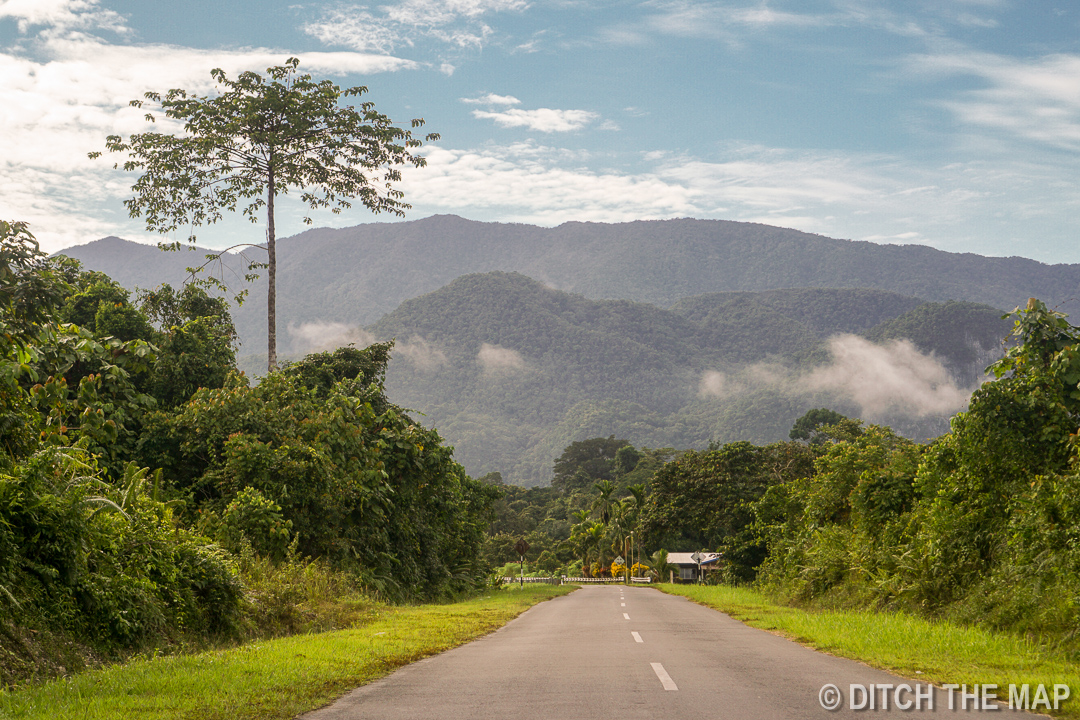
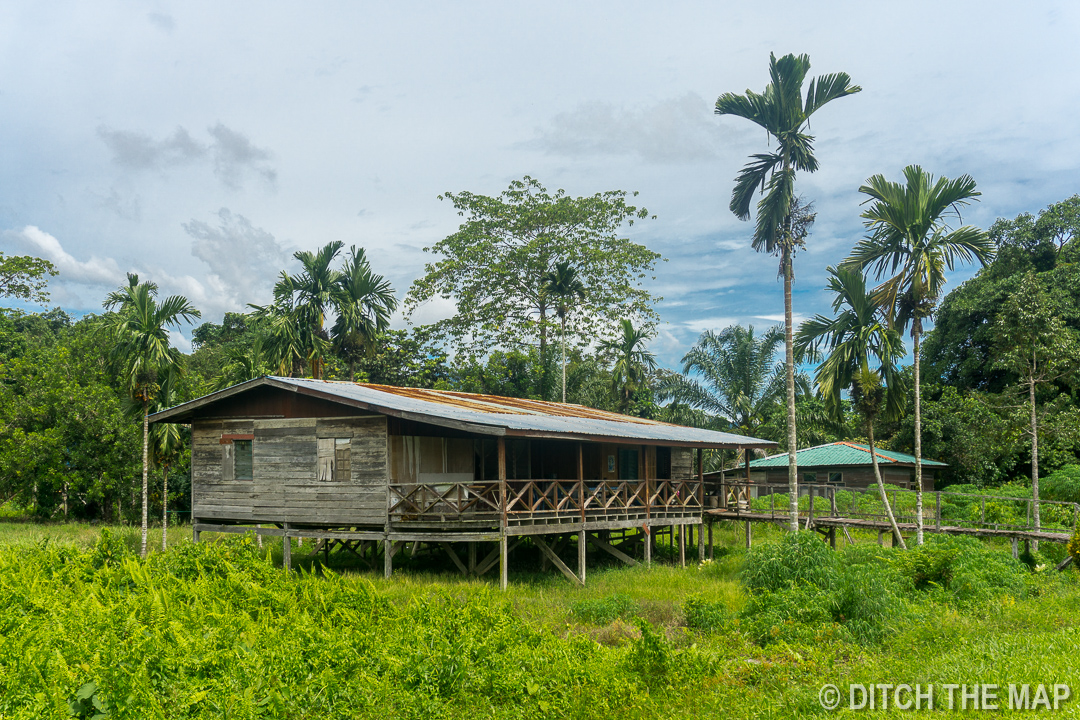
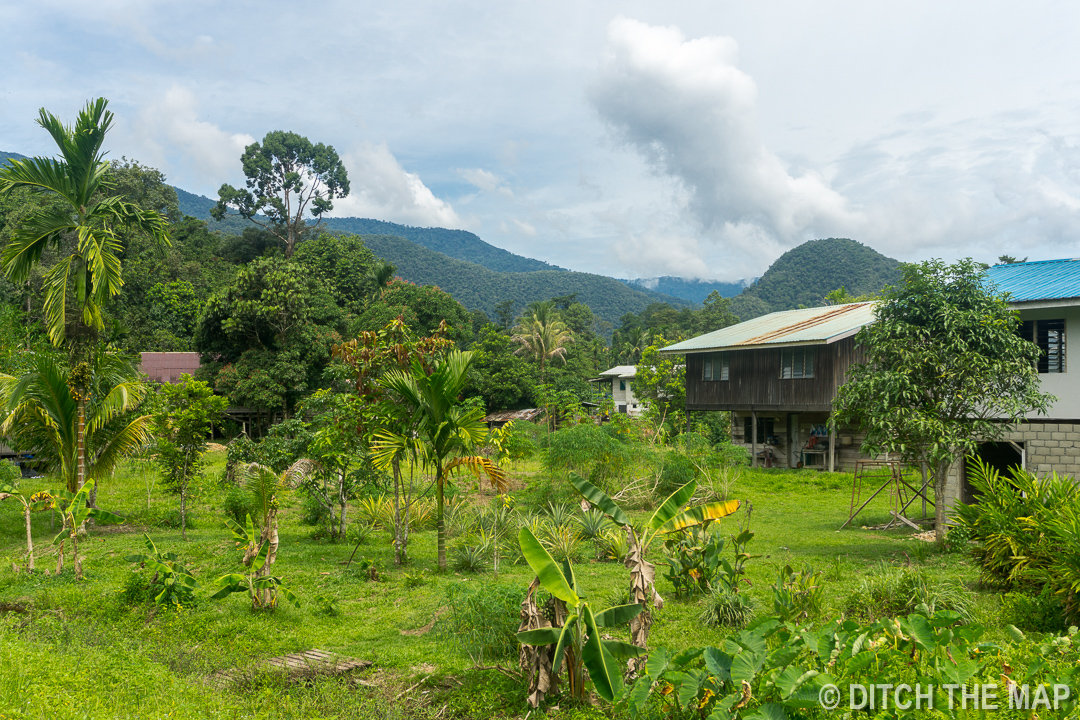
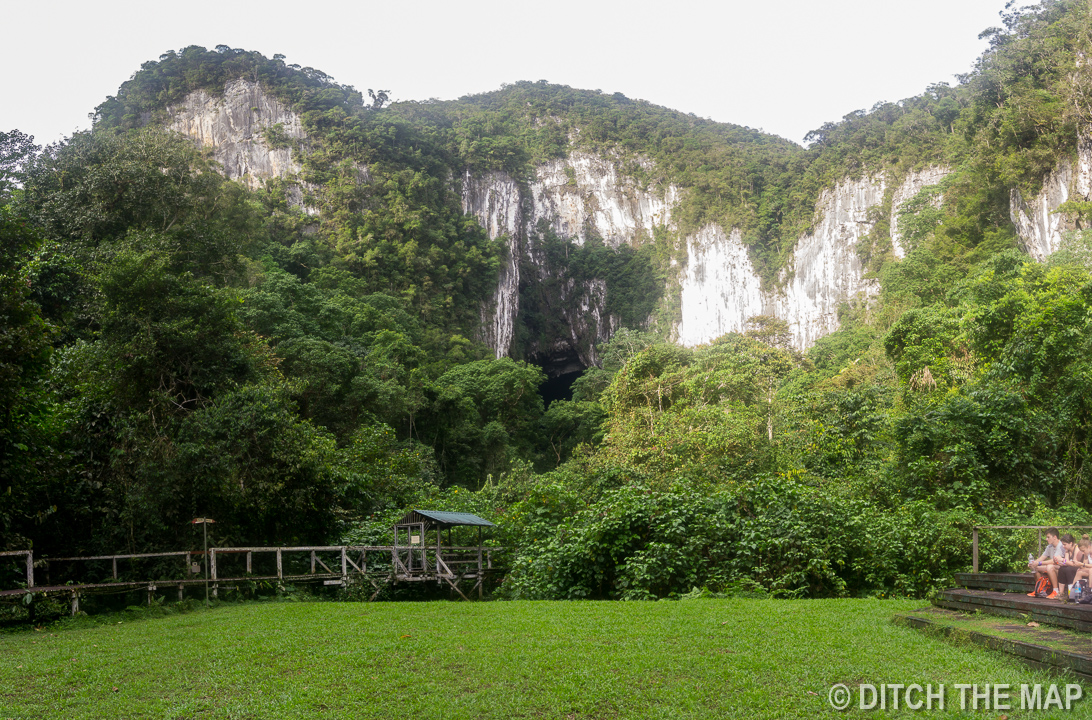
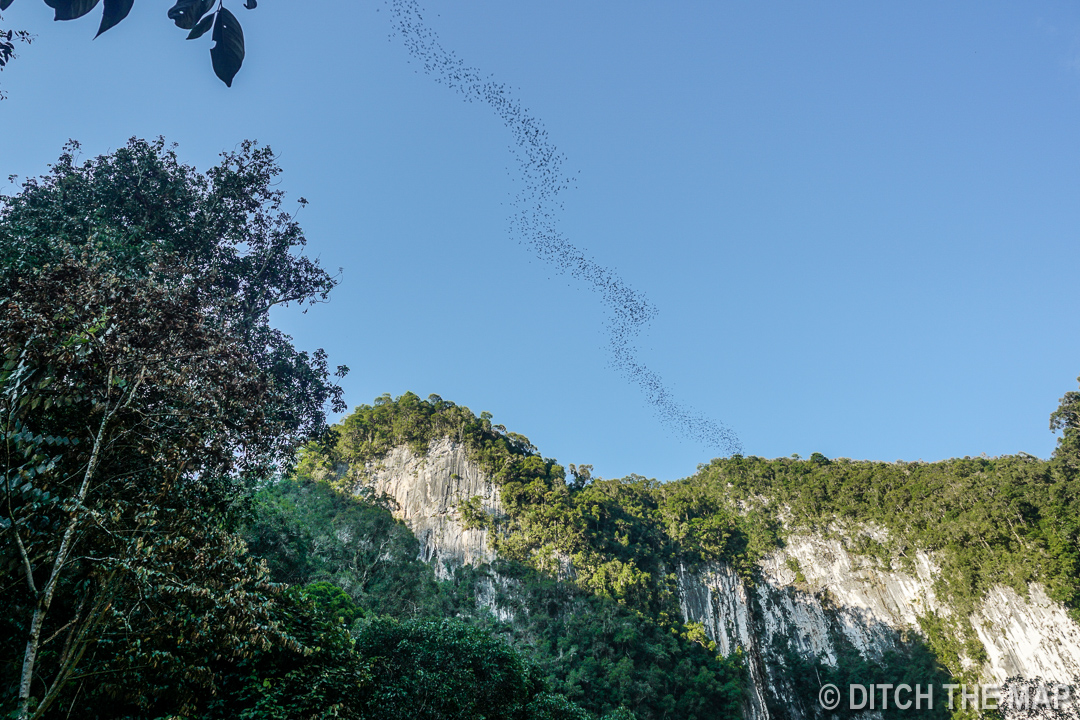
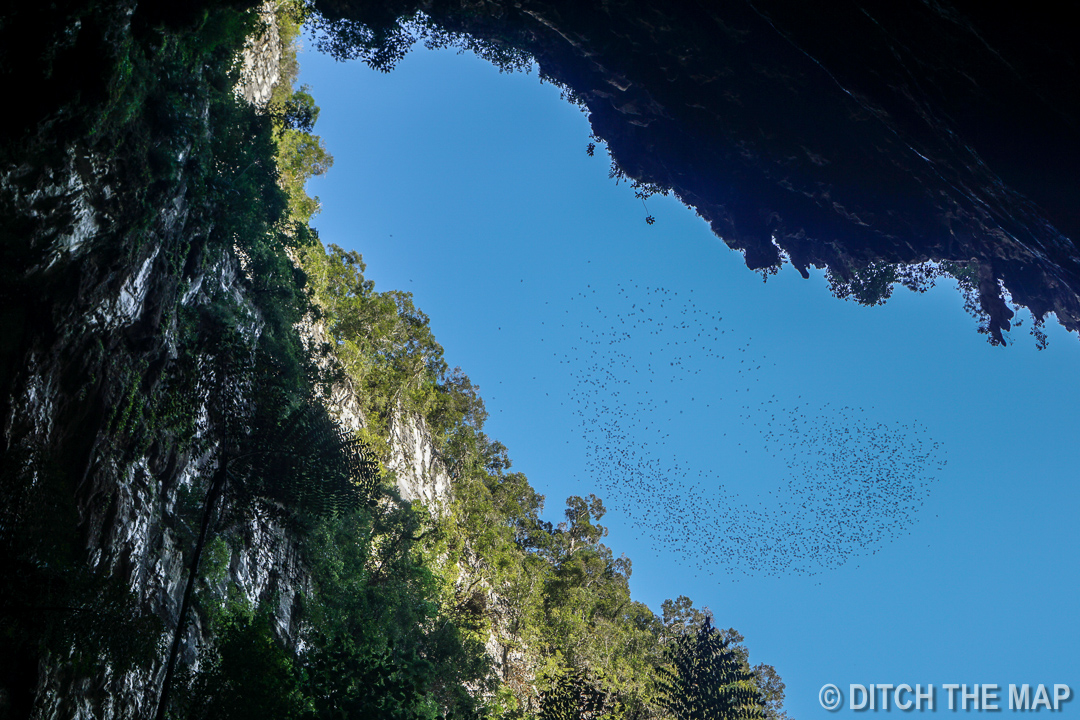
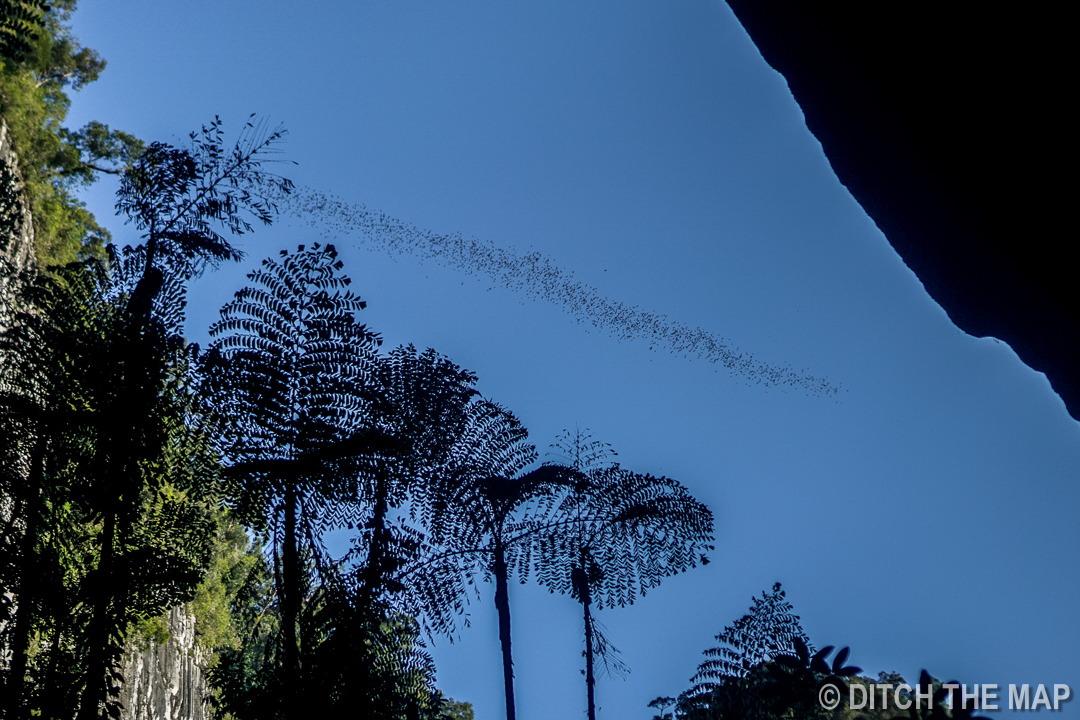
Bats flying out of Deer Cave in Borneo (click to view)
5 million bats leave Deer Cave in Mulu National Park in Sarawak, Borneo, Malaysia (click to view)
5 million bats leave Deer Cave in Mulu National Park in Sarawak, Borneo, Malaysia (click to view)
Clear Water Cave
We took a longboat ride down the river with another couple for our adventure hike in Clear Water Cave. The deeper we went into the cave, the darker it became, until the only light was that coming from our headlights (the four of us and our guide). We waded through the rushing river in the cave, some crossings required us to hold on to a rope and some of the crossing had us submerged chest deep. We used ropes to scale rock walls and cautiously crossed over jagged rocks eaten away by centuries of erosion. It was actually a bit scary at times on the slippery rocks holding onto a rope for dear life.
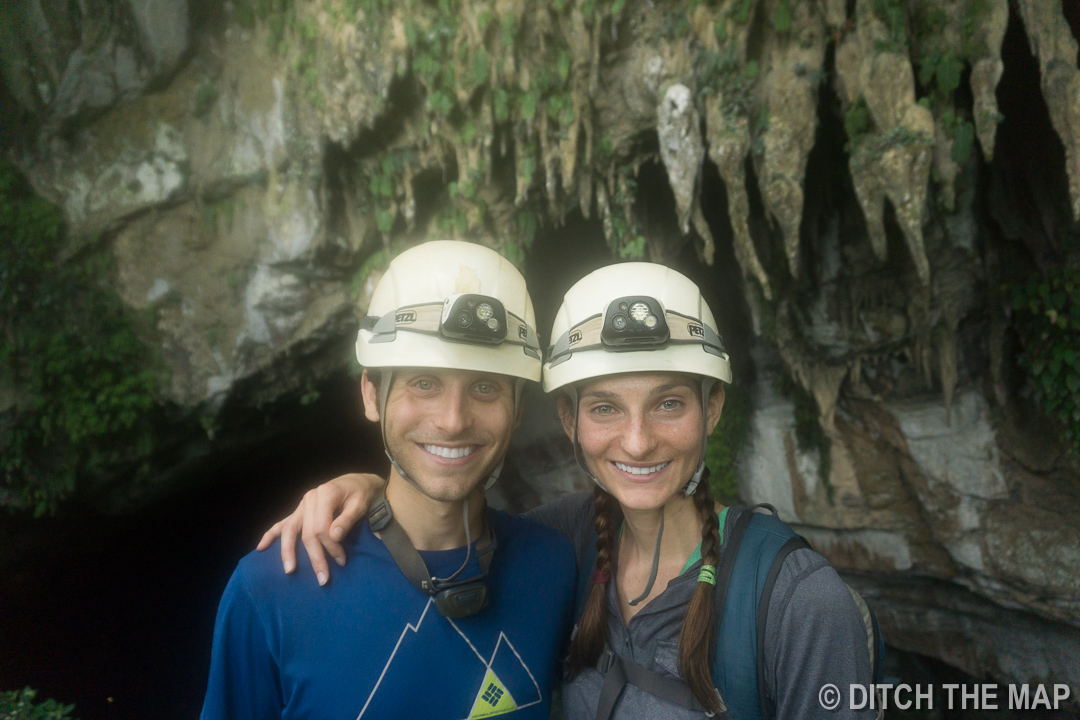
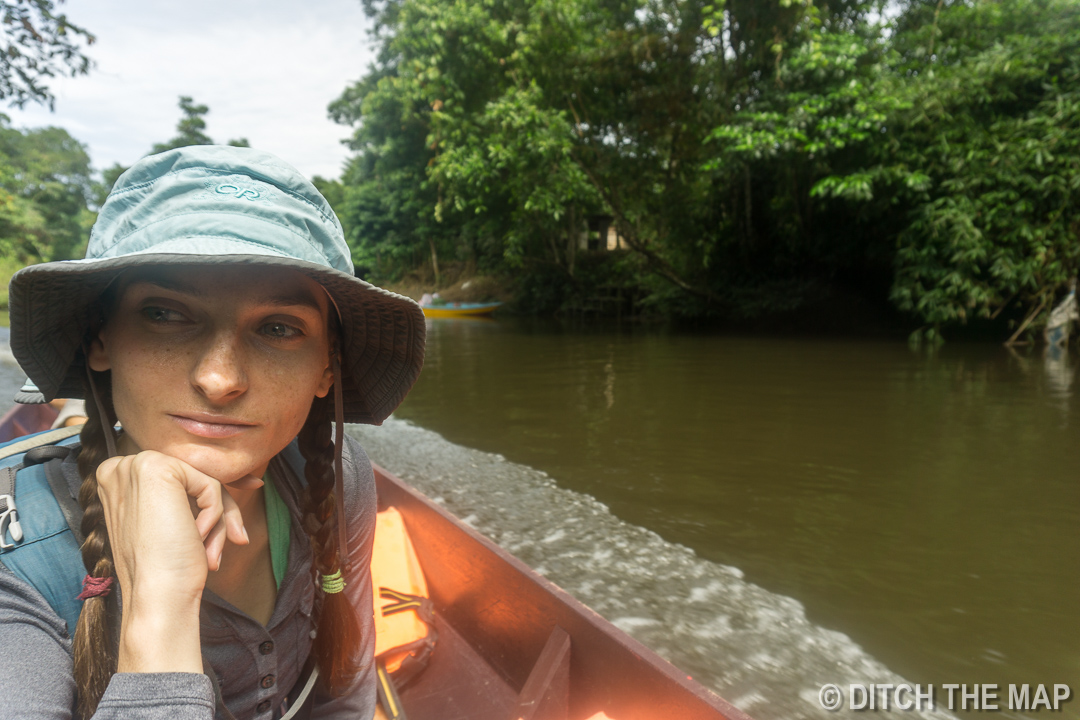
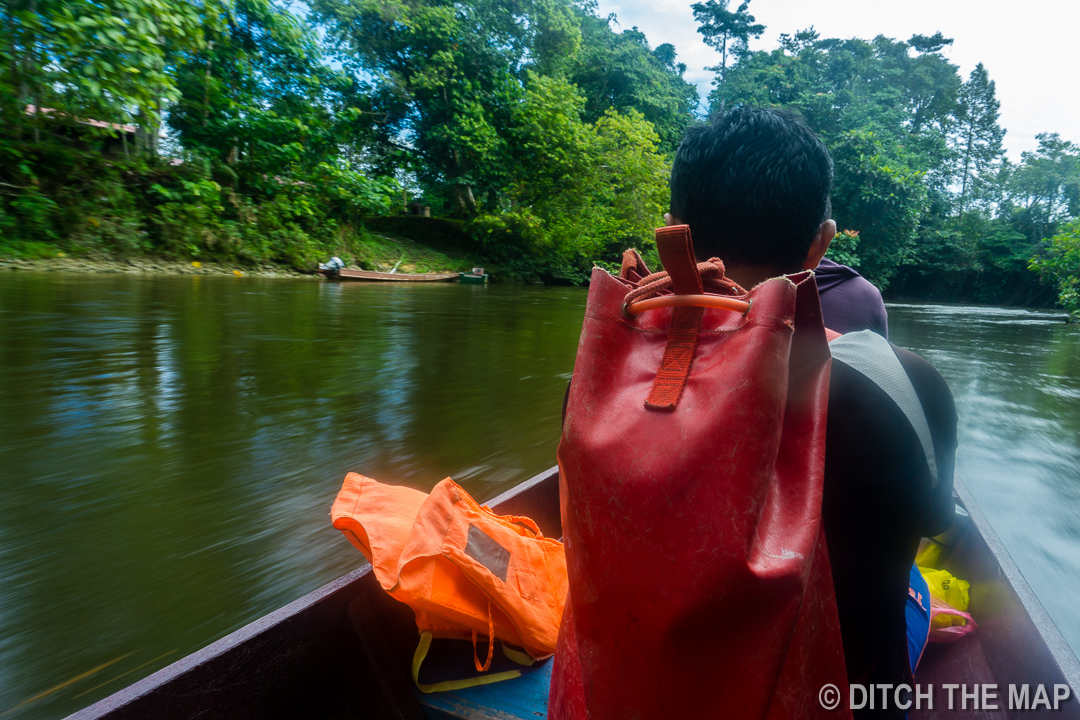
Inside the cave we saw some wildlife- huge crickets and spiders, catfish, swiftlet birds, and bats which dive bombed us hoping to catch the illuminated bugs in front of our head lights. We passed through huge atriums and narrow passages before stopping for lunch. We ate our boxed lunches inside the cave, listening to the sounds of the bats and the rushing water. At one point our guided had us stand quietly and turn off our headlights so we could really appreciate the sense-disorienting darkness.
Clearwater Revival Advanced Caving in Borneo (click to view)
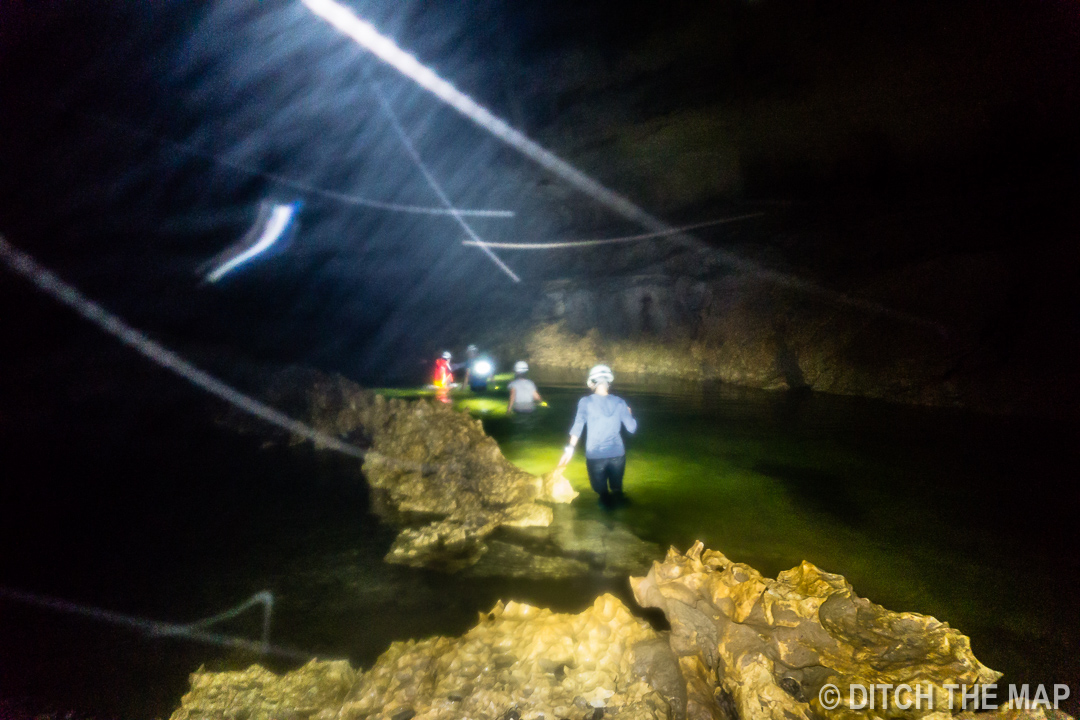
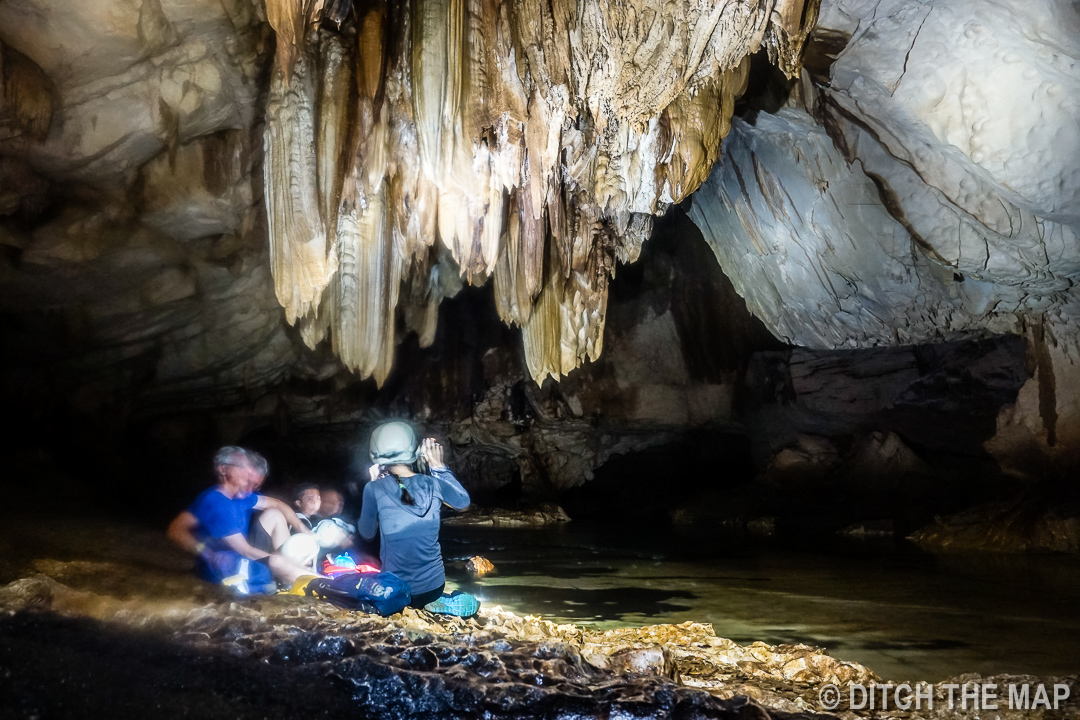
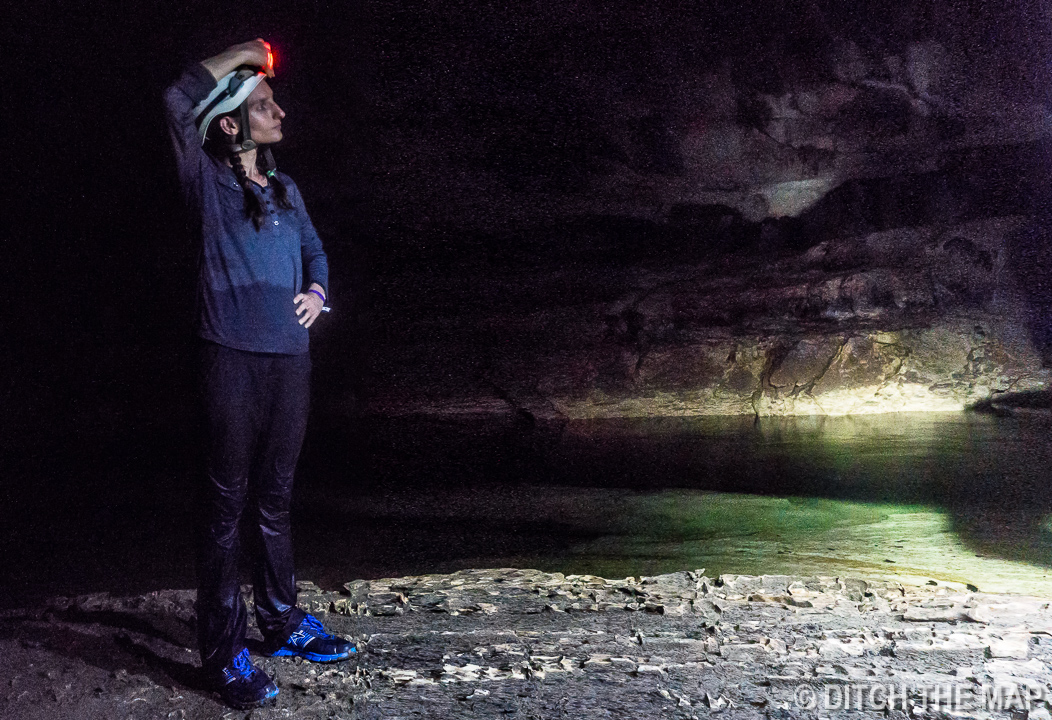
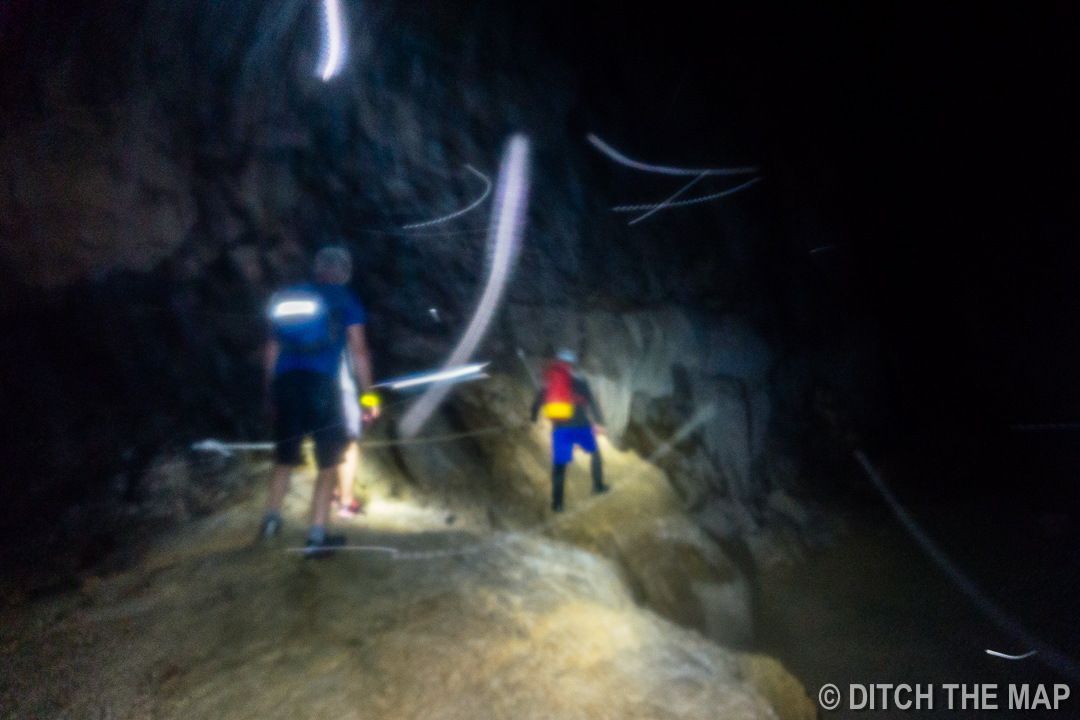
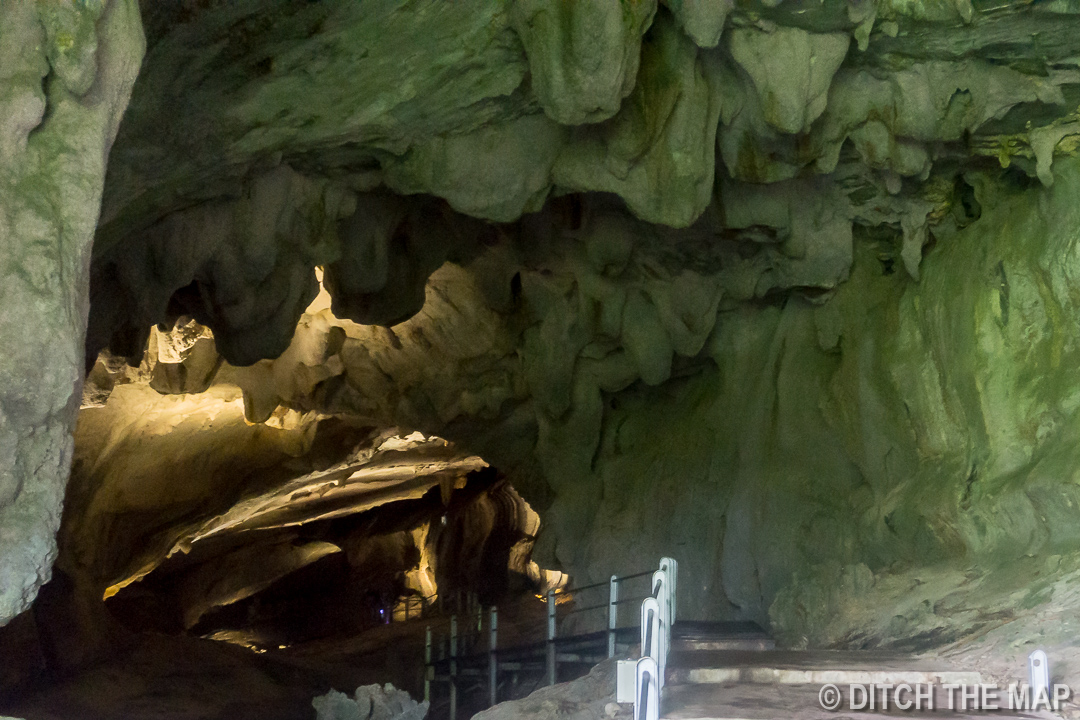

Our guide decided that we had proven a substantial level of fitness and ability and figured we could handle a more advanced route in the cave. It was truly an adventure as we crawled, squeezed and climbed to turtle cave. We had to crawl over boulders in tiny tunnels, squeeze through passages so narrow we had to keep our arms at our sides and coutour our bodies to walk in a half crouched position. Finally we reached the last stretch- we were submerged in water to our stomach in a small crevice with only about a 3 foot clearance above our heads. We followed this passage until we emerged out of a tiny opening back into the day light. Looking at the opening from the forest, you would never expect a person to come out of there! The tour was such a great value, for $50 we spent 5 hours on the tour, most of which we were deep within the cave.
We really enjoying spending time with the other couple on our tour. Our hearts were warmed by their sense of adventure and love for life. They were both nearing 60 and full of energy and enthusiasm. They kept pace the entire hike and even jumped in the river after for a swim. We aspire to be like them when we are that age! What sweet and interesting people. They had such full lives that there was very little conversation about jobs and careers, so refreshing.
Exiting Clearwater Cave in Borneo, Malaysia
Clearwater Revival Advanced Caving in Borneo (click to view)
Canopy Walk, Lanang Cave, and Deer Cave
We started our day with a walk amongst the tree tops. The 480 meter long skywalk is the worlds longest canopy walk. Unfortunately the wildlife wasn't too active while we were up there.
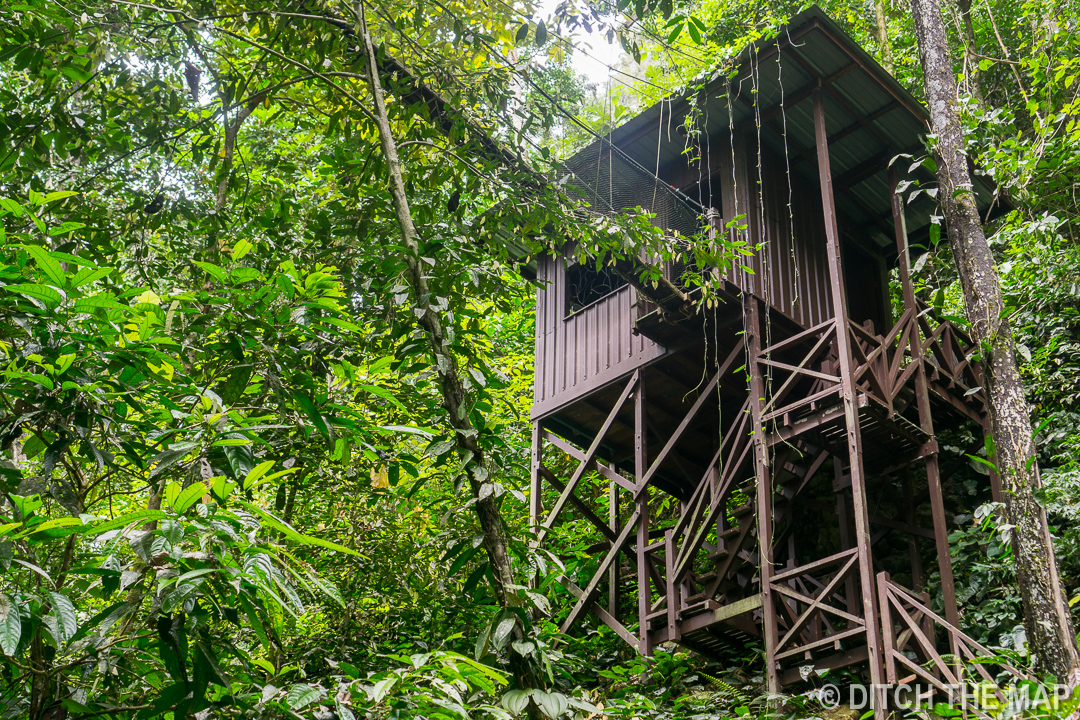

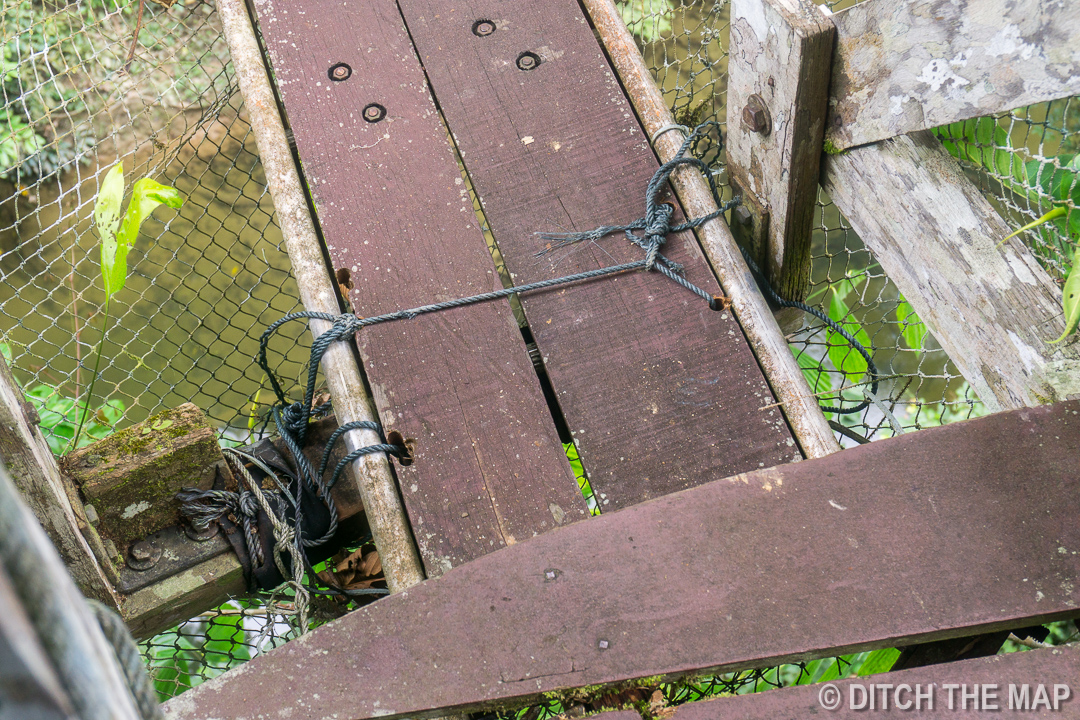
Canopy Walk in Mulu National Park, Sarawak, Borneo (click to view)
Our walking tours of the show caves were OK- the caves themselves were fascinating but the tour didn't add much. Langang cave, though small, is beautiful with many unique rock formations. Deer Cave is the largest cave passage in the world with a length of 2 kilometers and a height/width of 90 meters, really makes you feel small! Looking up at the ceiling of the cave we were able to see black patches, which were groups of thousands of bats hanging high above our heads. The cave had a smell from all the bat poo.
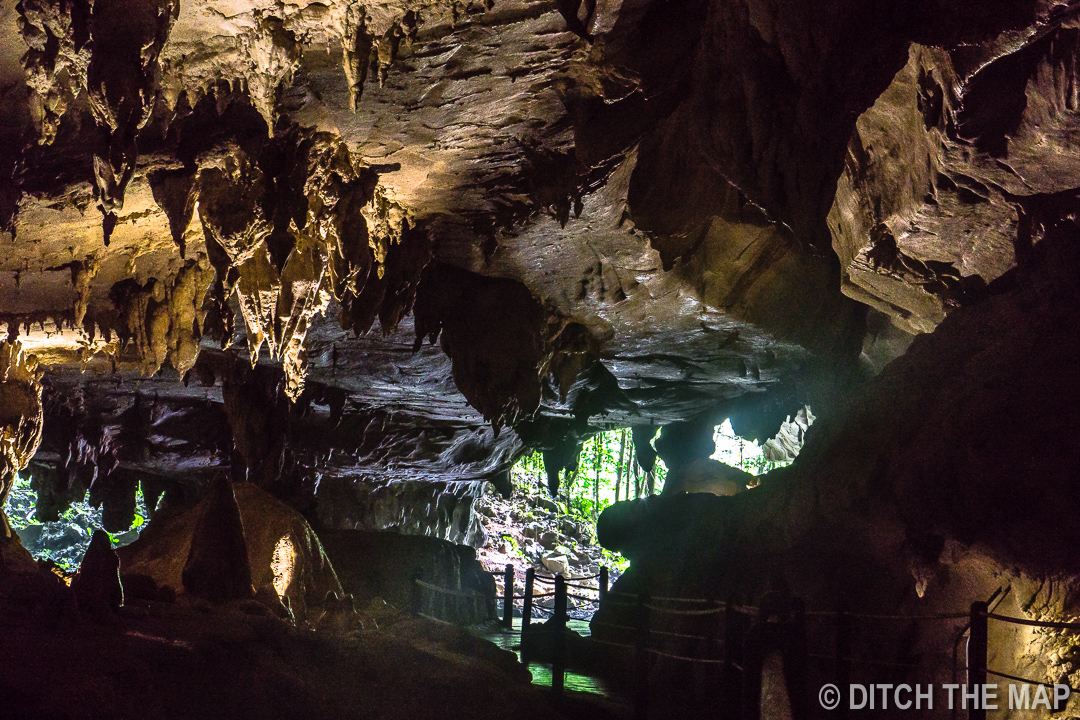
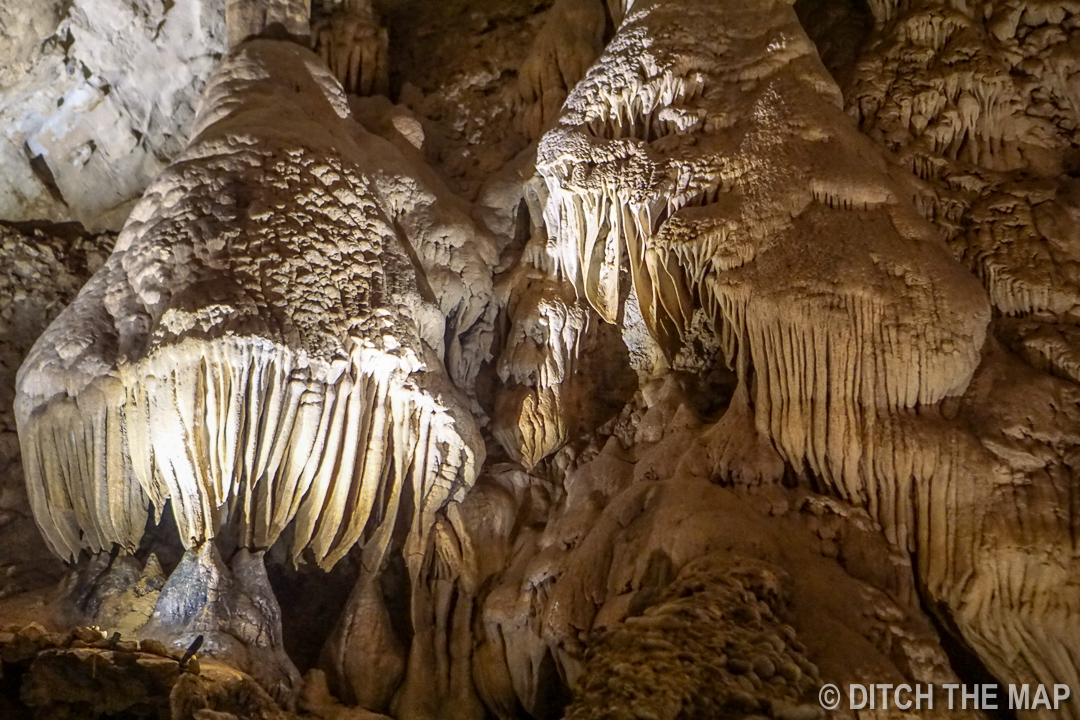
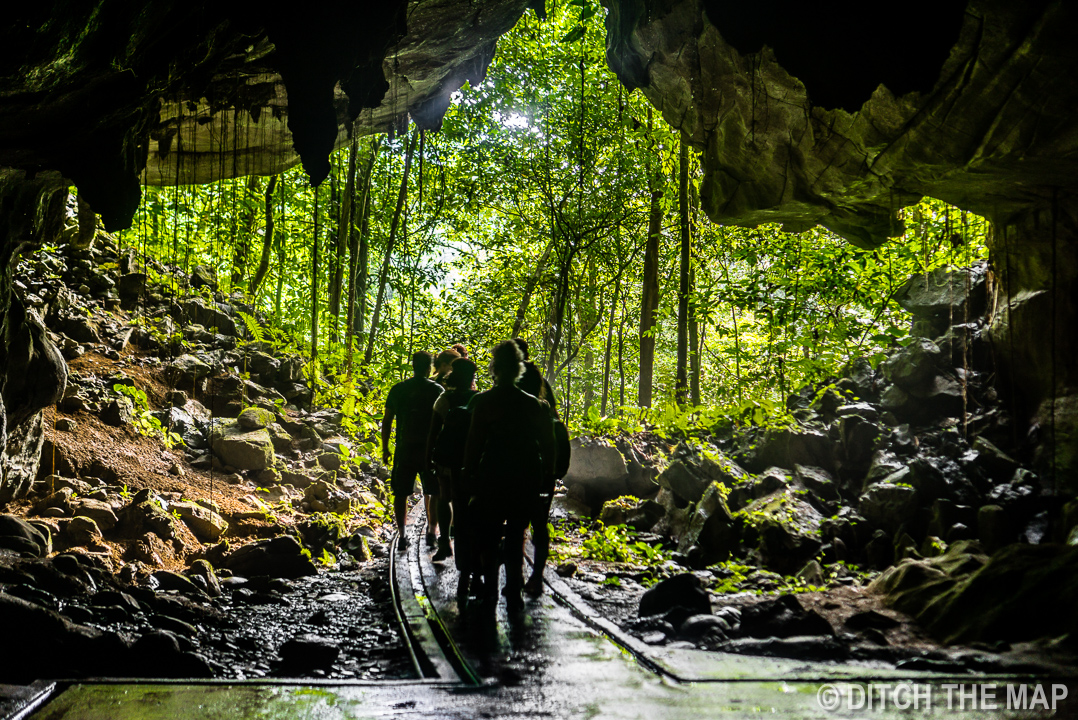
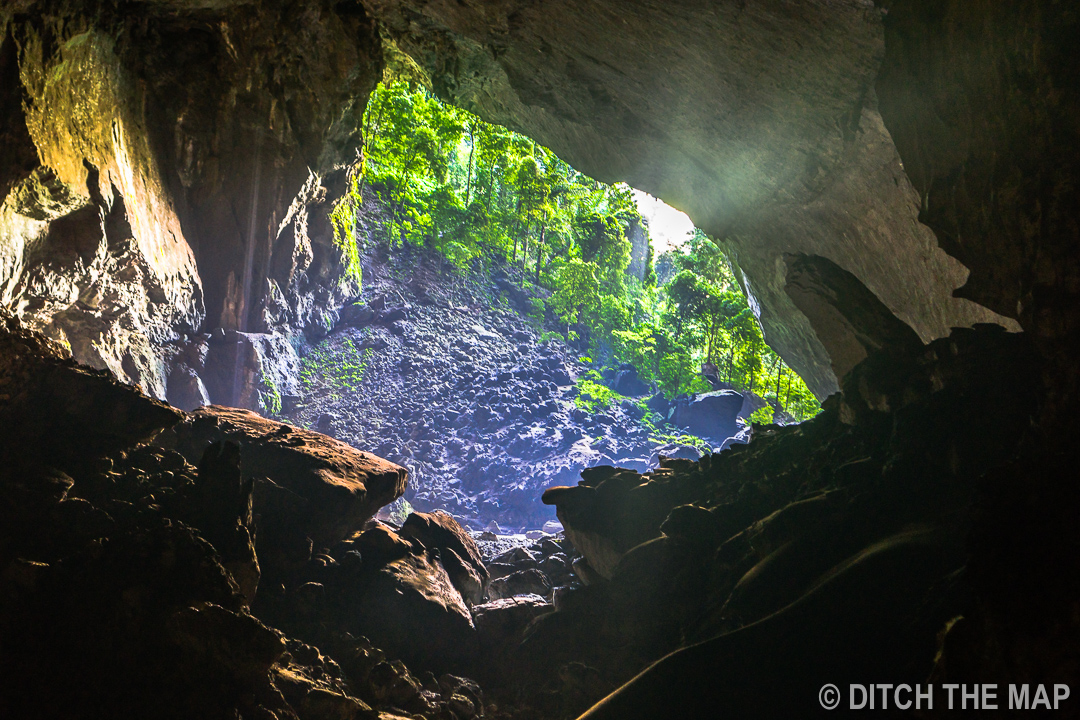

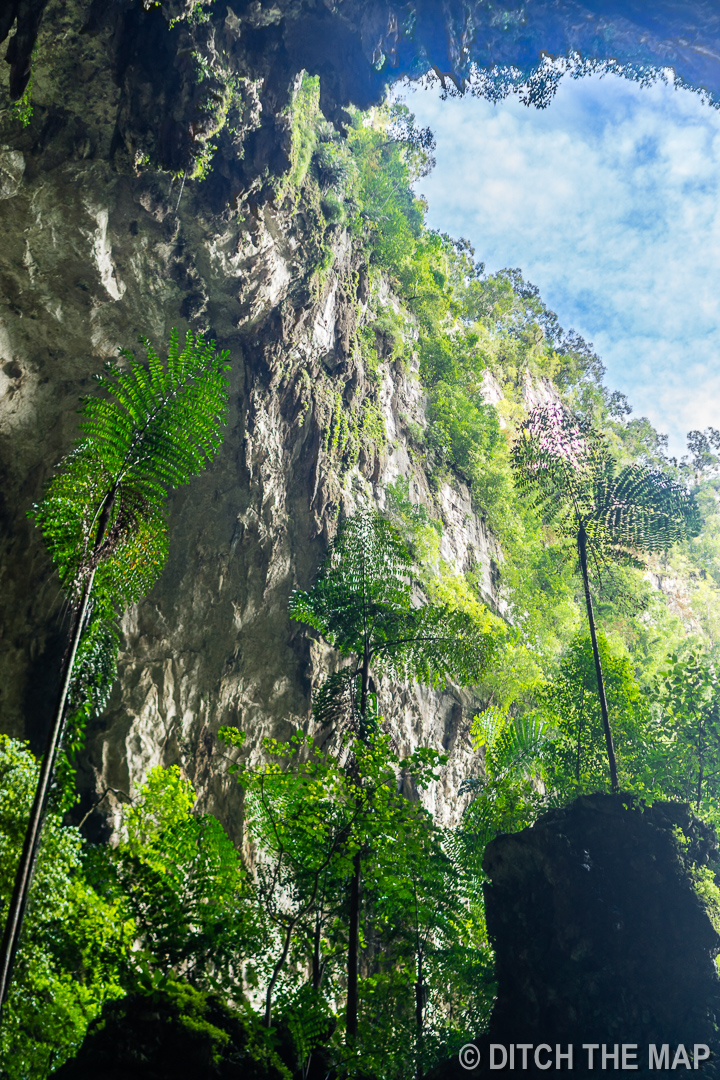
Flora and Fauna of Mulu National Park
Furry Caterpillar in Borneo (click to view)
A Stick Insect Walking in Mulu NP, Borneo, Malaysia (click to view)
Raja Brooke Butterfly In Borneo (click to view)
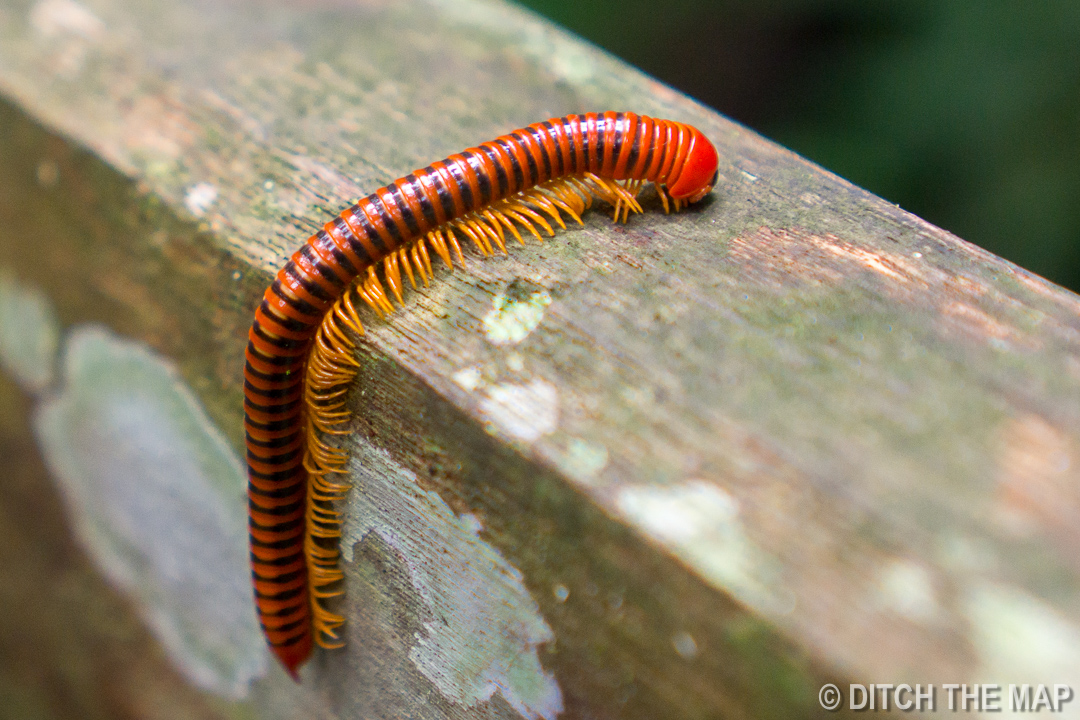
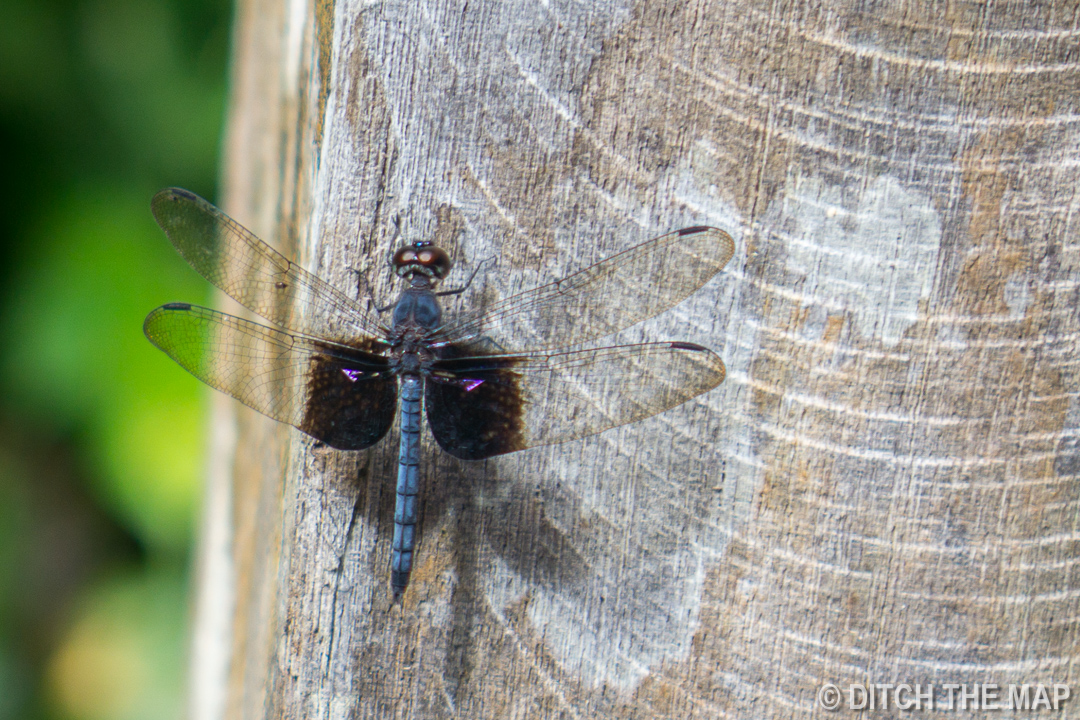
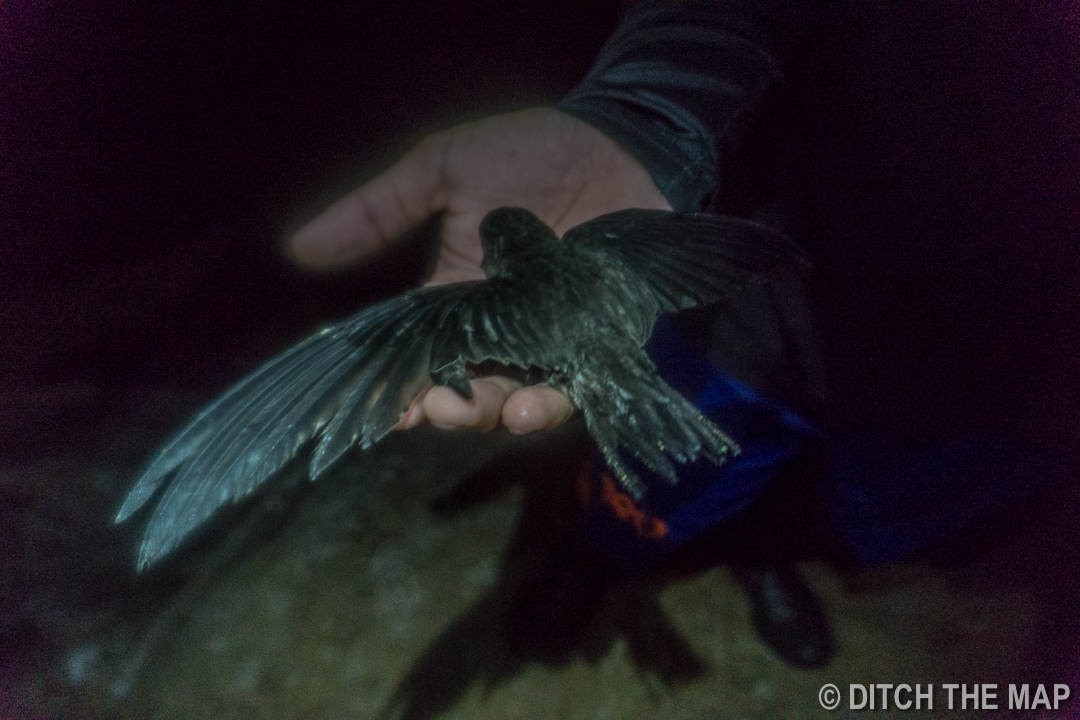
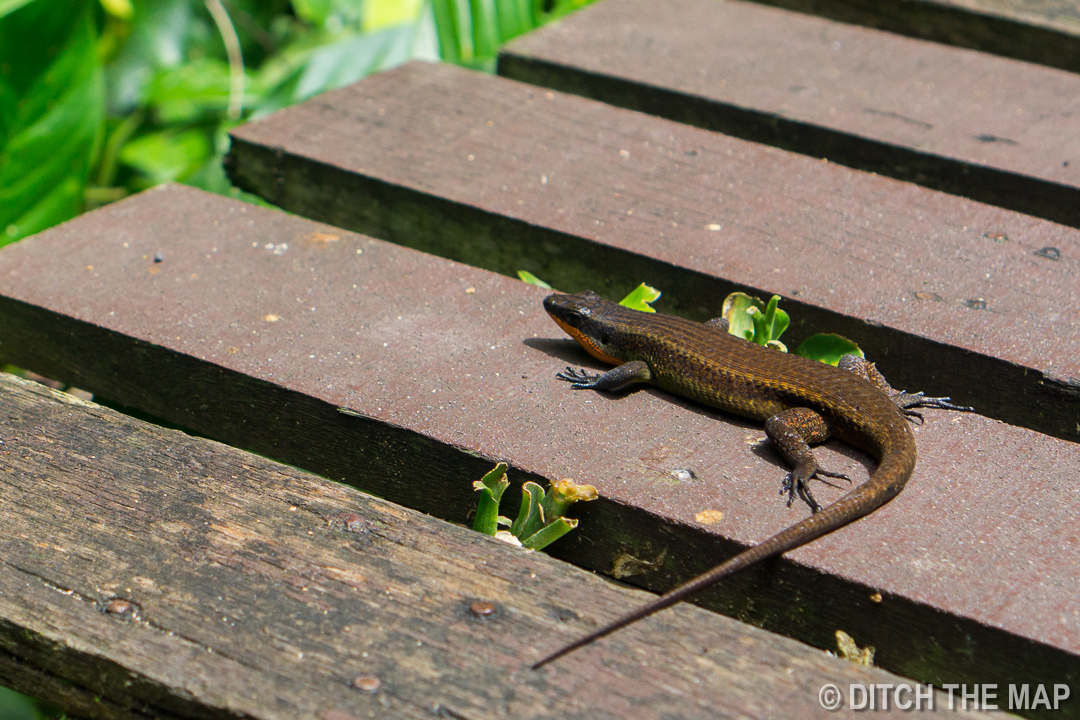
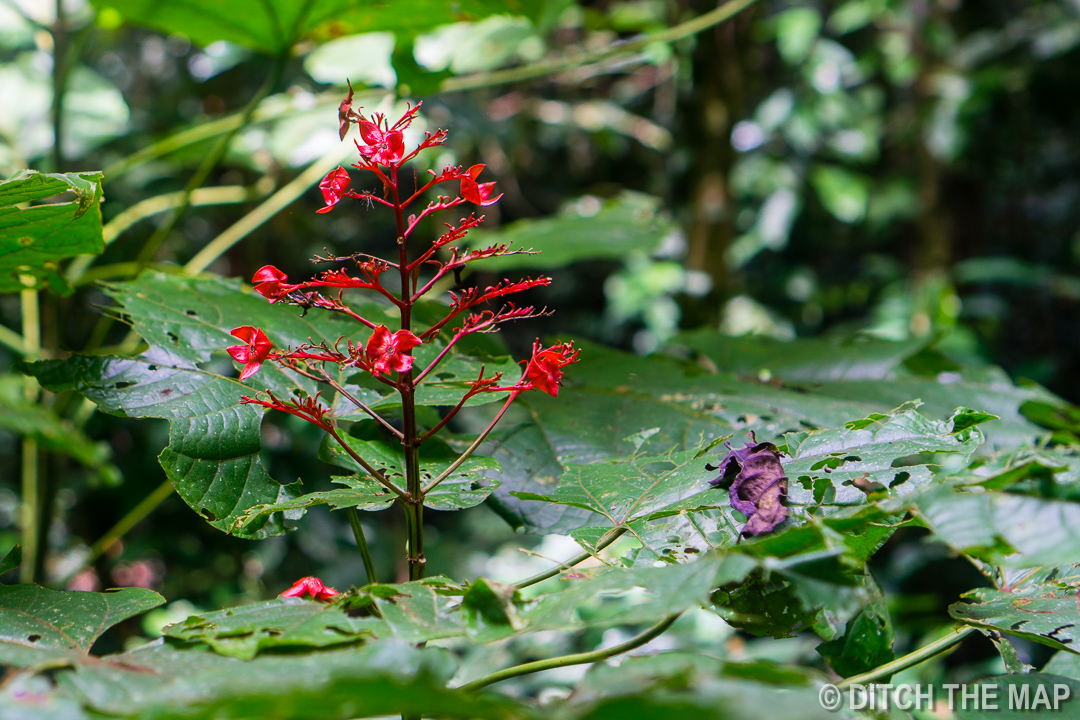
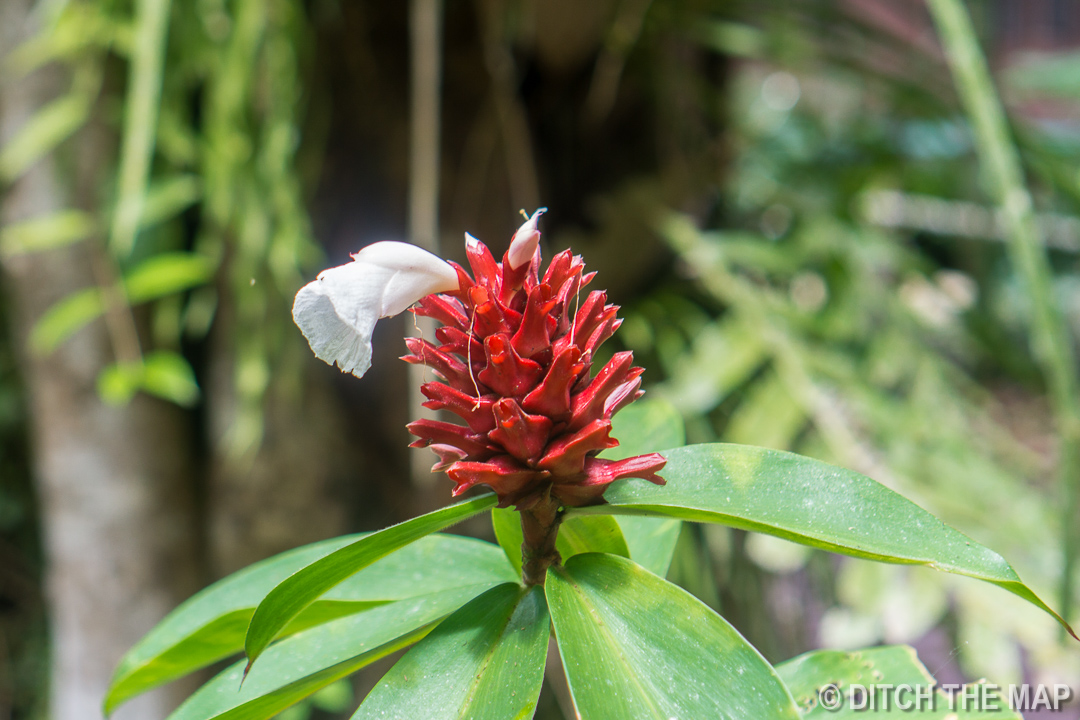
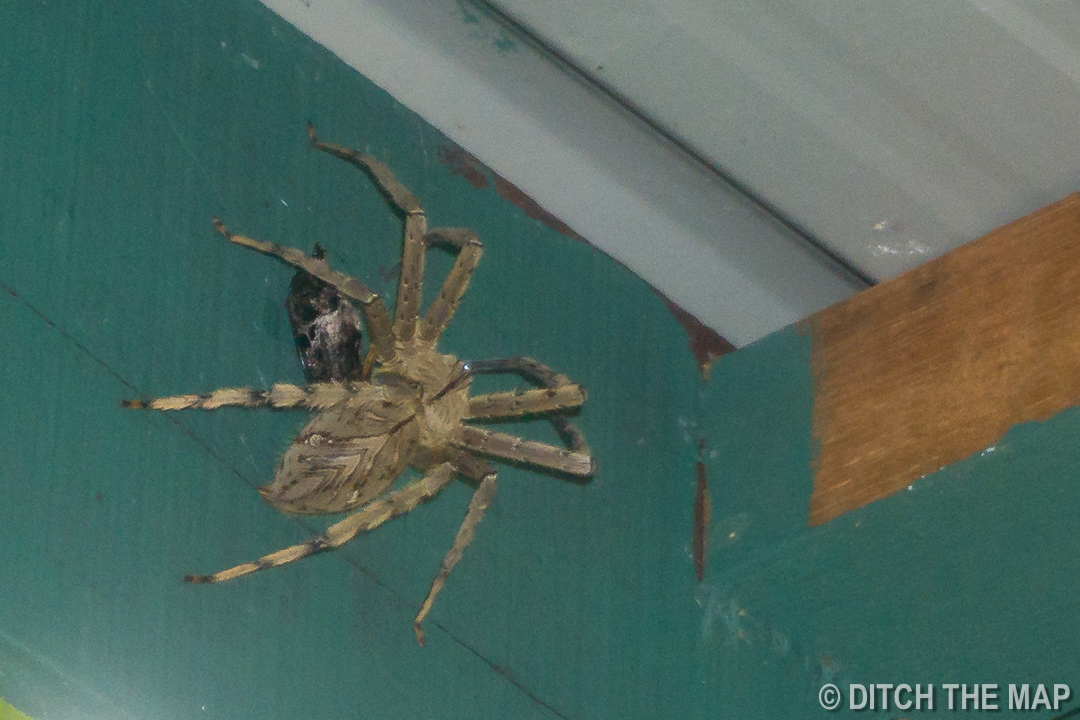
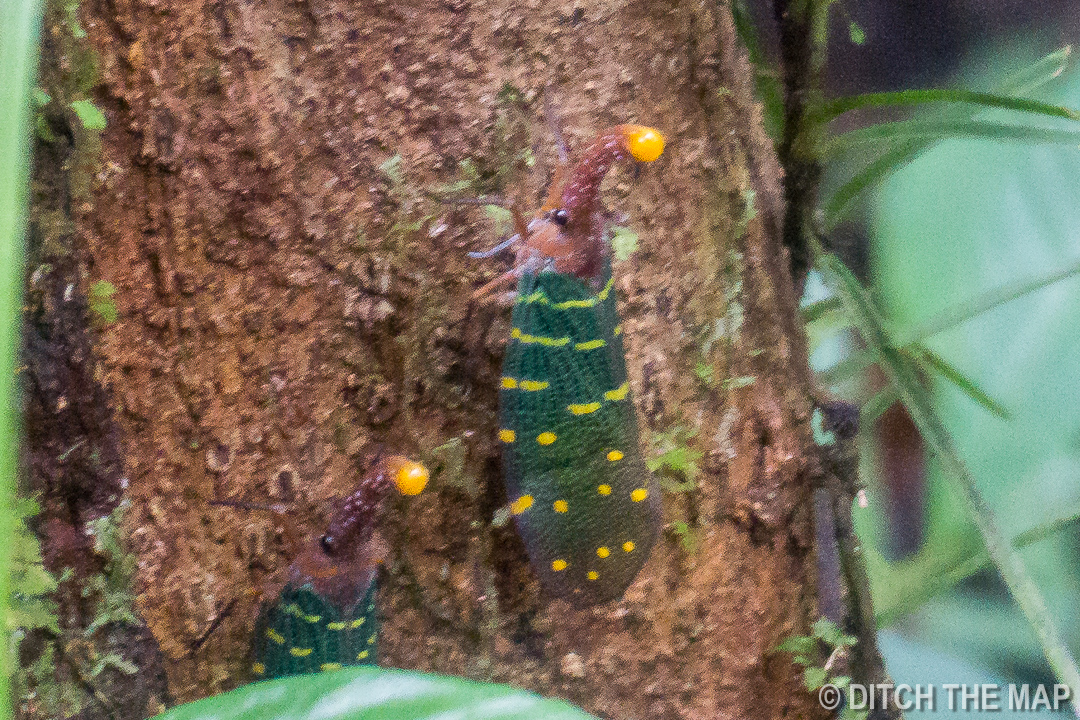
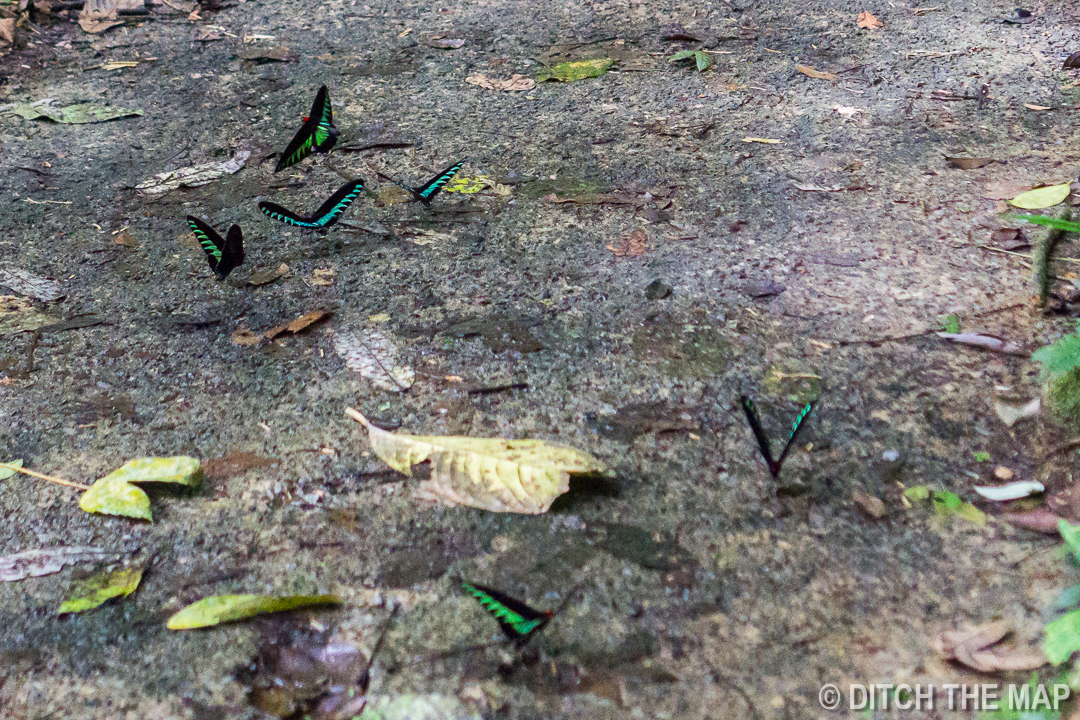
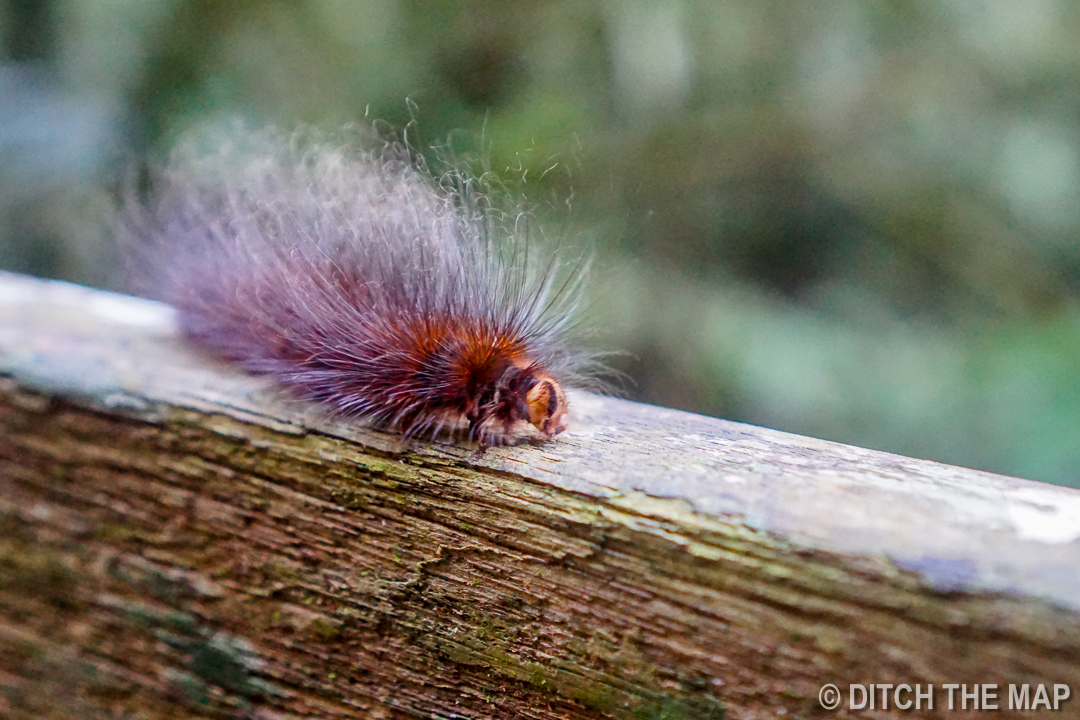
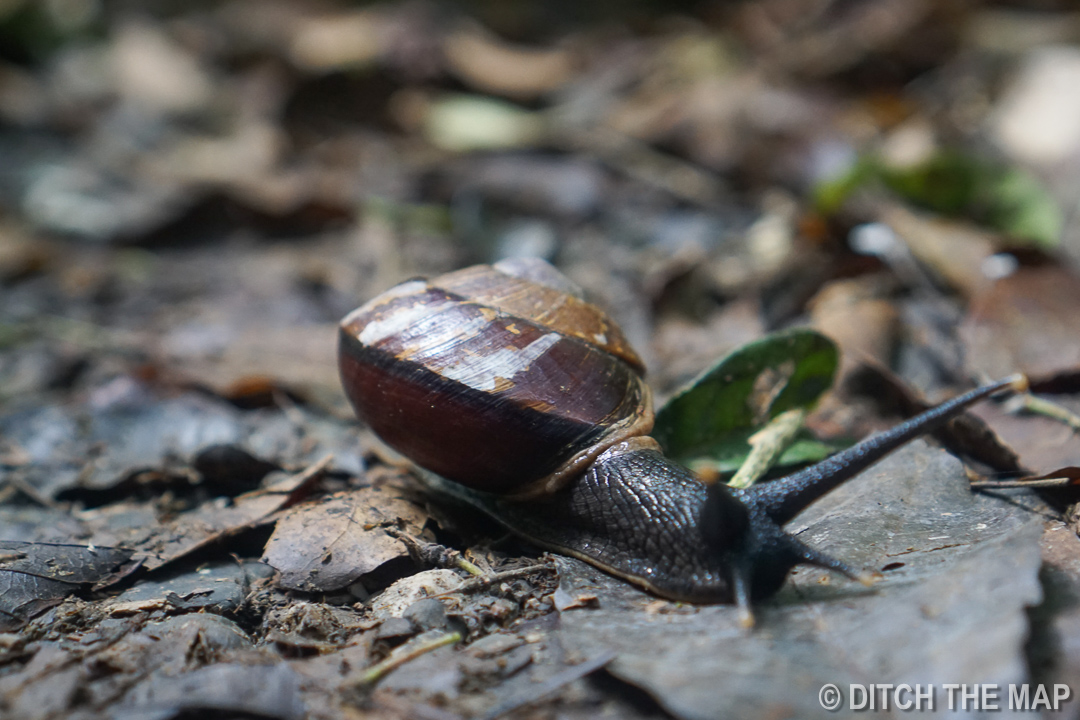
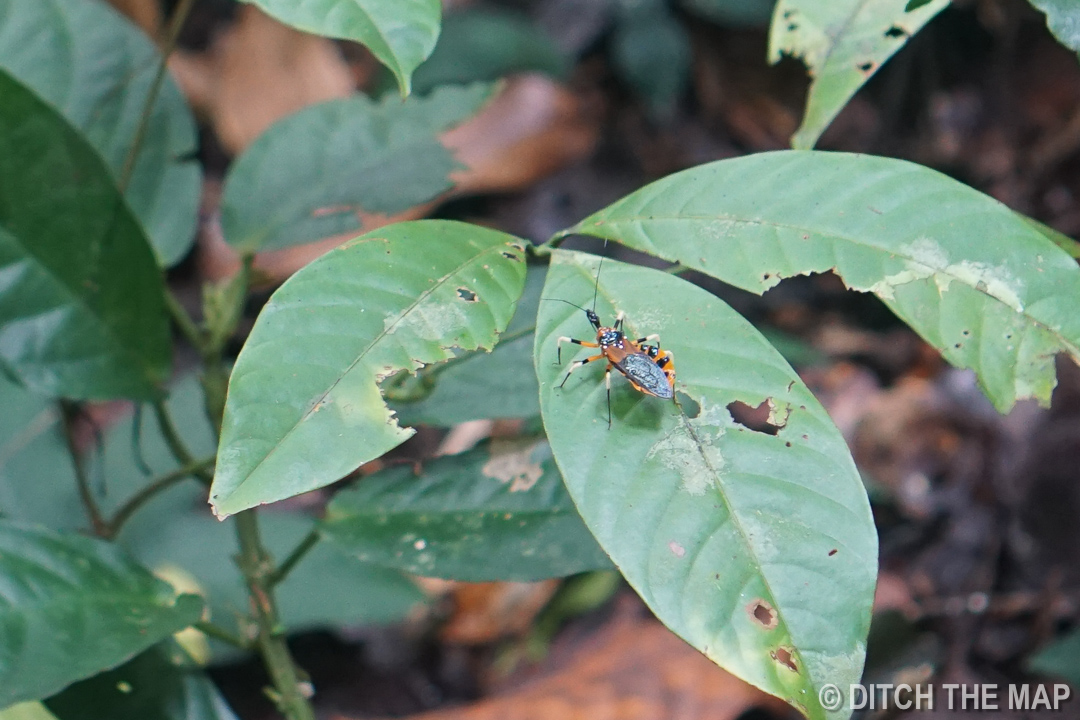
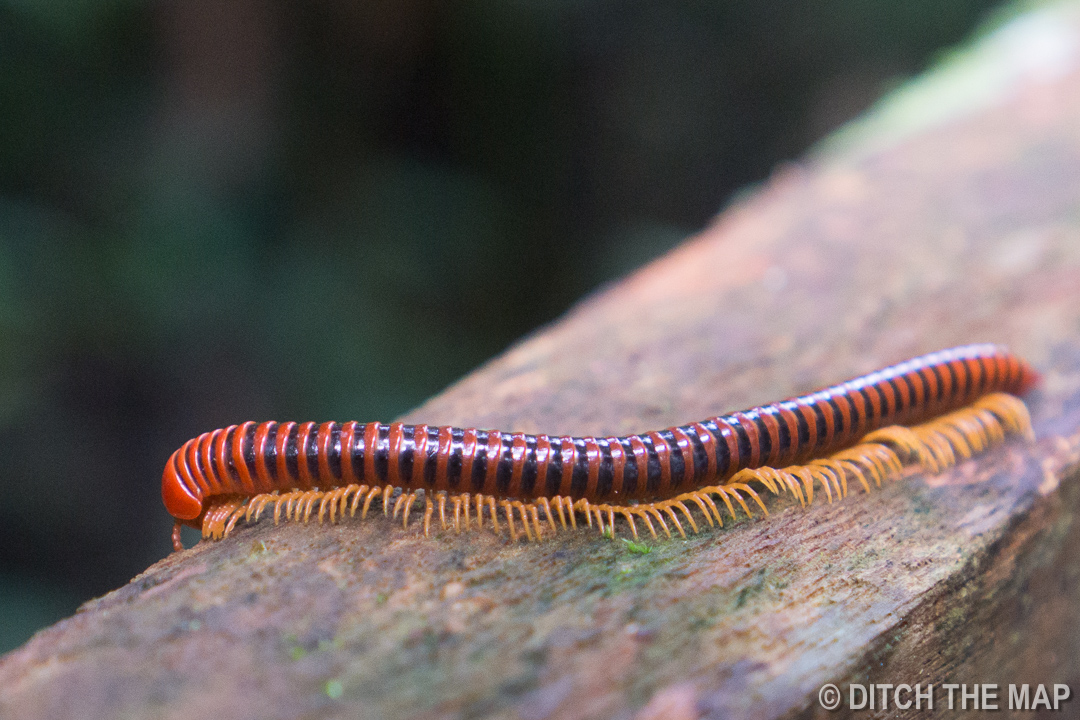
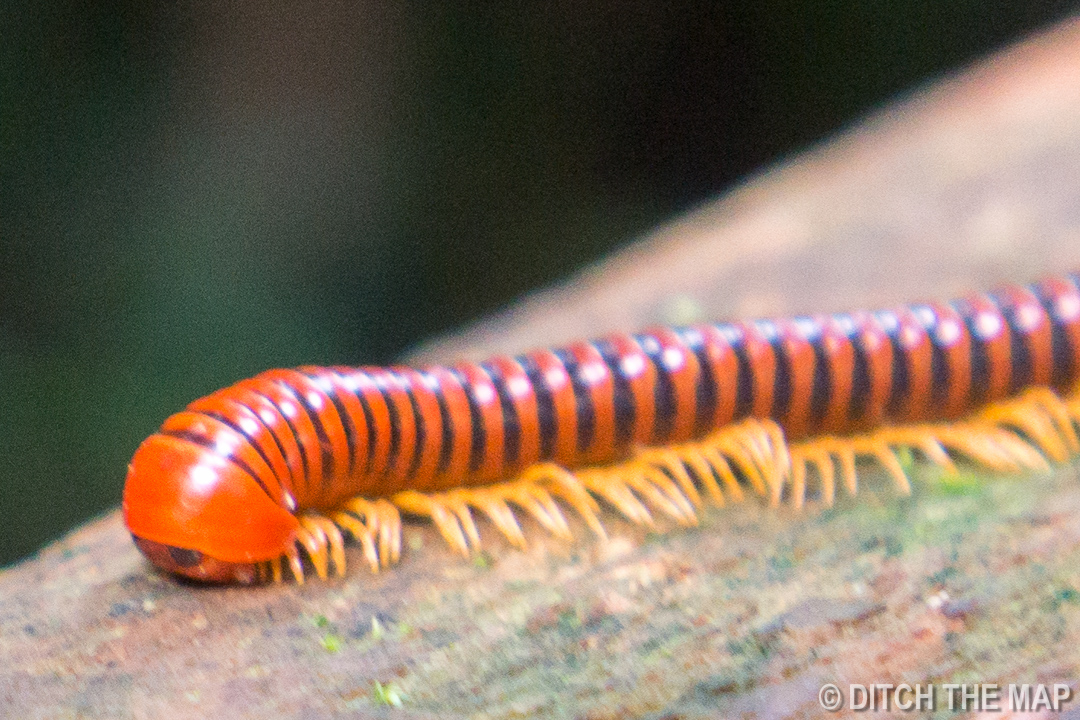
Make sure to PIN this blog if you enjoyed reading this article!
Original Publish Date: July 29 - August 5, 2016
Make sure to check out the 9 Viator tours shown below:













